4-я Красноармейская, 2А
Санкт-Петербург, 190005
Email: info@lenmoto.ru
Телефон: +7 (921) 930-81-18
Телефон: +7 (911) 928-08-06
Компания ЛенМото
Запчасти, аксессуары, экипировка, тюнинг для мотоциклов, скутеров, квадроциклов, снегоходов, багги, гидроциклов, катеров и лодочных моторов.
Подпишитесь на наши новости
Подписаться
Safety First
Safe Operating Rules
Motorcycles are different from other vehicles. They
operate, steer, handle and brake differently. Unskilled or
improper use could result in loss of control, death or
serious injury. (00556c)
Take a rider training course.
Read Owner’s Manual before riding, adding accessories or servicing.
Wear a helmet, eye protection and protective clothing.
Never tow a trailer.
Before operating your new motorcycle it is your responsibility to read and follow the operating and
maintenance instructions in this manual, and follow these basic rules for your personal safety.
Know and respect the rules of the road. See Rules of the Road. Carefully read and
familiarize yourself with the motorcycle safety information that is provided by your country or
state. In the United States, read the RIDING TIPS booklet that is provided with your Owner’s
Manual, and read through the MOTORCYCLE HANDBOOK which is made available by your
state.
Before starting engine, check for proper operation of brake, clutch, shifter, throttle controls,
correct fuel and oil supply.
Harley Davidson parts and accessories are designed for
Harley Davidson motorcycles. Using non Harley Davidson
parts or accessories can adversely affect performance,
stability or handling, which could result in death or serious
injury. (00001b)
Use only Harley Davidson approved parts and accessories. Use of certain other
manufacturer’s performance parts will void your new motorcycle warranty. See your Harley
Davidson dealer for details.
Stop the engine when refueling or servicing the fuel
system. Do not smoke or allow open flame or sparks near
gasoline. Gasoline is extremely flammable and highly
explosive, which could result in death or serious injury.
(00002a)
When refueling your motorcycle, the following rules should be observed.
2012 V Rod Muscle Owner’s Manual
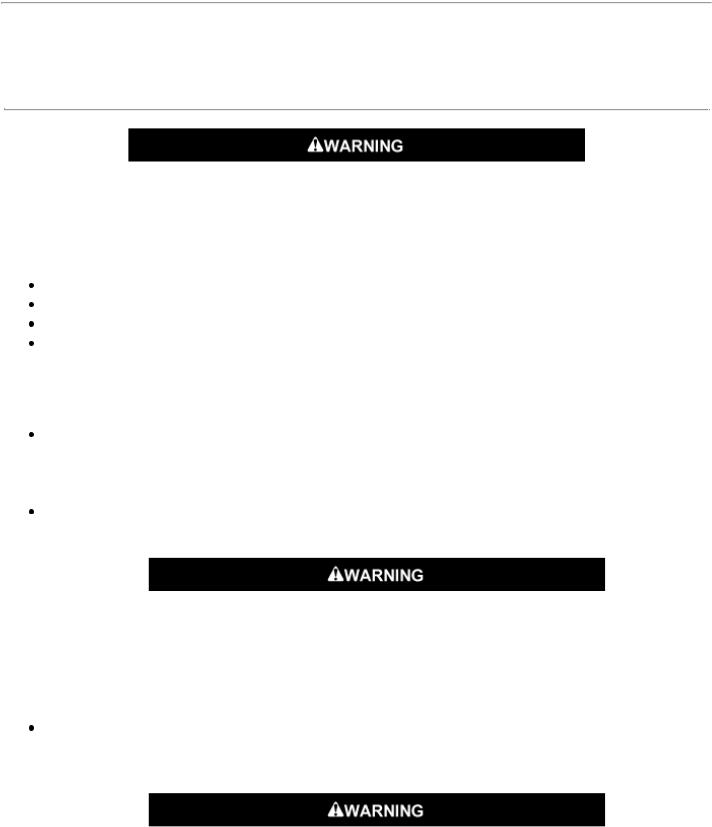
2010 VRod Muscle Owner’s Manual
Safety First
Safe Operating Rules
Motorcycles are different from other vehicles. They operate, steer, handle and brake differently. Unskilled or improper use could result in loss of control, death or serious injury. (00556c)
Take a rider training course.
Read Owner’s Manual before riding, adding accessories or servicing.
Wear a helmet, eye protection and protective clothing.
Never tow a trailer.
Before operating your new motorcycle it is your responsibility to read and follow the operating and maintenance instructions in this manual, and follow these basic rules for your personal safety.
Know and respect the rules of the road (see Rules of the Road). Carefully read and observe the rules contained in the RIDING TIPS booklet accompanying this Owner’s Manual. Read and familiarize yourself with the contents of the MOTORCYCLE HANDBOOK for your state.
Before starting engine, check for proper operation of brake, clutch, shifter, throttle controls, correct fuel and oil supply.
Do not use aftermarket parts and custom made front forks which can adversely affect performance and handling. Removing or altering factory installed parts can adversely affect performance and could result in death or serious injury. (00001a)
Use only HarleyDavidson approved parts and accessories. Use of certain other manufacturer’s performance parts will void your new motorcycle warranty. See your Harley Davidson dealer for details.
Stop the engine when refueling or servicing the fuel system. Do not smoke or allow open flame or sparks near gasoline. Gasoline is extremely flammable and highly explosive, which could result in death or serious injury. (00002a)
When refueling your motorcycle, the following rules should be observed.

Refuel in a well ventilated area with the engine turned off. Remove fuel filler cap slowly.
Do not smoke or allow open flames or sparks when refueling or servicing the fuel system. Do not fill fuel tank above the bottom of the filler neck insert.
Leave air space to allow for fuel expansion.
Do not store motorcycle with gasoline in tank within the home or garage where open flames, pilot lights, sparks or electric motors are present. Gasoline is extremely flammable and highly explosive, which could result in death or serious injury. (00003a)
Engine exhaust from this product contains chemicals known to the State of California to cause cancer, and birth defects or other reproductive harm. (00004f)
Do not run motorcycle in a closed garage or confined area. Inhaling motorcycle exhaust, which contains poisonous carbon monoxide gas, could result in death or serious injury. (00005a)
The jiffy stand locks when placed in the full forward (down) position with vehicle weight on it. If the jiffy stand is not in the full forward (down) position with vehicle weight on it, the vehicle can fall over which could result in death or serious injury. (00006a)
Be sure jiffy stand is fully retracted before riding. If jiffy stand is not fully retracted, it can contact the road surface causing a loss of vehicle control, which could result in death or serious injury. (00007a)
A new motorcycle must be operated according to the special breakin procedure. See
Breakin Riding Rules: VRSC Models.
Operate motorcycle only at moderate speed and out of traffic until you have become thoroughly familiar with its operation and handling characteristics under all conditions.
NOTE:
We recommend that you obtain information and formal training in the correct motorcycle riding technique. In the United States, the Motorcycle Safety Foundation® offers beginning and

advanced rider safety courses. Call 8004469227 for information.
Travel at speeds appropriate for road and conditions and never travel faster than posted speed limit. Excessive speed can cause loss of vehicle control, which could result in death or serious injury. (00008a)
Do not exceed the legal speed limit or drive too fast for existing conditions. Always reduce speed when poor driving conditions exist. High speed increases the influence of any other condition affecting stability and increases the possibility of loss of control.
Pay strict attention to road surfaces and wind conditions. Any two wheeled vehicle may be subject to upsetting forces such as wind blasts from passing trucks, holes in the pavement, rough road surfaces, rider control error, etc. These forces may influence the handling characteristics of your motorcycle. If this happens, reduce speed and guide the motorcycle with a relaxed grip to a controlled condition. Do not brake abruptly or force the handlebar. This may aggravate an unstable condition.
Keep cargo weight concentrated close to the motorcycle and as low as possible to minimize the change in the motorcycle’s center of gravity. Distribute weight evenly on both sides of the vehicle and do not load bulky items too far behind the rider or add weight to the handlebars or front forks. Do not exceed maximum specified load in each saddlebag.
NOTE:
New riders should gain experience under various conditions while driving at moderate speeds.
Operate your motorcycle defensively. Remember, a motorcycle does not afford the same protection as an automobile in an accident. One of the most common accident situations occurs when the driver of the other vehicle fails to see or recognize a motorcycle and turns left into the oncoming motorcyclist. Operate only with headlamp on.
Wear an approved helmet, clothing, and foot gear suited for motorcycle riding. Bright or light colors are best for greater visibility in traffic, especially at night. Avoid loose, flowing garments and scarves.
Avoid contact with exhaust system and wear protective clothing that completely covers legs while riding. Exhaust pipes and mufflers get very hot when engine is running and remain too hot to touch, even after engine is turned off. Failure to wear protective clothing could result in burns or other serious injury. (00009a)
When carrying passengers, it is your responsibility to instruct them on proper riding procedures. (See the RIDING TIPS booklet included in your HarleyDavidson Owner’s Kit.)
Do not allow other individuals, under any circumstances, to operate your motorcycle unless you know they are experienced, licensed riders and are thoroughly familiar with the operation of your particular motorcycle.
Protect your motorcycle against theft. After parking your motorcycle, lock the steering head and remove ignition key from switch. Set security alarm if present.
Safe motorcycle operation requires alert mental judgment combined with a defensive driving

attitude. Do not allow fatigue, alcohol or drugs to endanger your safety or that of others. Vehicles equipped with a sound system should have the volume adjusted to a non distracting level before operating vehicle.
Maintain your motorcycle in proper operating condition in accordance with Regular Service Intervals: 2010 VRSC Models. Particularly important to motorcycle stability is proper tire inflation pressure, tread condition, and proper adjustment of wheel bearings and steering head bearings.
Do not operate vehicle with forks locked. Locking the forks restricts the vehicle’s turning ability, which could result in death or serious injury. (00035a)
Perform the service and maintenance operations as indicated in the regular service interval table. Lack of regular maintenance at the recommended intervals can affect the safe operation of your motorcycle, which could result in death or serious injury. (00010a)
Do not operate motorcycle with loose, worn or damaged steering or suspension systems. Contact a Harley Davidson dealer for repairs. Loose, worn or damaged steering or suspension components can adversely affect stability and handling, which could result in death or serious injury. (00011a)
Regularly inspect shock absorbers and front forks. Replace leaking, damaged or worn parts that can adversely affect stability and handling, which could result in death or serious injury. (00012a)
Use HarleyDavidson replacement fasteners. Aftermarket fasteners can adversely affect performance, which could result in death or serious injury. (00013a)
See your HarleyDavidson service manual for proper torque values.
Aftermarket fasteners may not have the specific property requirements to perform properly.
Be sure tires are properly inflated, balanced and have

adequate tread. Inspect your tires regularly and see a HarleyDavidson dealer for replacements. Riding with excessively worn, unbalanced or underinflated tires can adversely affect stability and handling, which could result in death or serious injury. (00014a)
Replace punctured or damaged tires. In some cases, small punctures in the tread area may be repaired from within the demounted tire by a HarleyDavidson dealer. Speed should NOT exceed 50 mph (80 km/h) for the first 24 hours after repair, and the repaired tire should NEVER be used over 80 mph (130 km/h). Failure to follow this warning could result in death or serious injury. (00015a)
Do not exceed the motorcycle’s Gross Vehicle Weight Rating (GVWR) or Gross Axle Weight Rating (GAWR). Exceeding these weight ratings can affect stability and handling, which could result in death or serious injury. (00016e)
GVWR is the sum of the weight of the motorcycle, accessories, and the maximum weight of the rider, passenger and cargo that can be safely carried.
The GVWR is shown on the information plate, located on the frame steering head or the frame downtube.
GAWR is the maximum amount of weight that can be safely carried on each axle.
Do not tow a disabled motorcycle. Towing can adversely affect stability and handling, which could result in death or serious injury. (00017a)
Do not pull a trailer with a motorcycle. Pulling a trailer can cause tire overload, reduced braking efficiency and adversely affect stability and handling, which could result in death or serious injury. (00018b)
Direct contact of D.O.T. 4 brake fluid with eyes can cause irritation. Avoid eye contact. In case of eye contact flush with large amounts of water and get medical attention.
Swallowing large amounts of D.O.T. 4 brake fluid can cause digestive discomfort. If swallowed, obtain medical attention. Use in well ventilated area. KEEP OUT OF
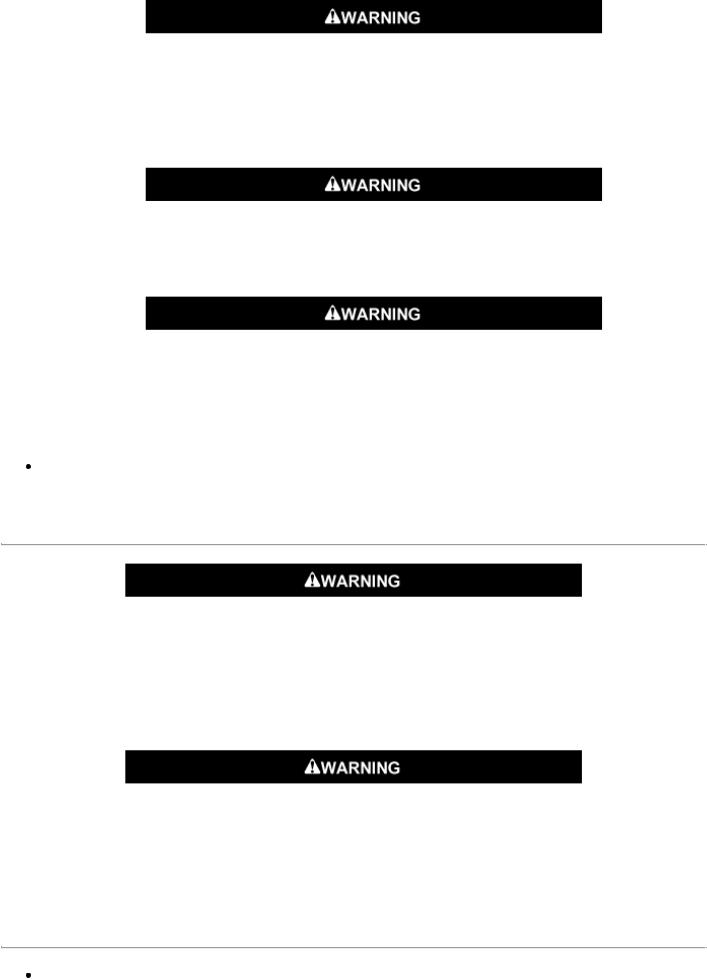
REACH OF CHILDREN. (00240a)
Batteries, battery posts, terminals and related accessories contain lead and lead compounds, and other chemicals known to the State of California to cause cancer, and birth defects or other reproductive harm. Wash hands after handling. (00019e)
Do not open storage compartments while riding. Distractions while riding can lead to loss of control, which could result in death or serious injury. (00082a)
Consult a HarleyDavidson dealer regarding any questions or problems that occur in the operation of your motorcycle. Failure to do so can aggravate an initial problem, cause costly repairs, cause an accident and could result in death or serious injury. (00020a)
Be sure all equipment required by federal, state and local law is installed and in good operating condition.
Additional Safe Operating Rules
If ABS lamp remains on continuously, the ABS is not operating. The standard brake system is operational, but wheel lock up can occur. Contact a HarleyDavidson Dealer to have ABS repaired. A locked wheel will skid and can cause loss of vehicle control, which could result in death or serious injury. (00361a)
ABS cannot prevent lockup of rear wheel due to engine braking. ABS will not aid in cornering or on loose/uneven surfaces. A locked wheel will skid and can cause loss of vehicle control, which could result in death or serious injury. (00362a)
Rules of the Road
Always sound your horn, actuate your turn signals, and exercise caution when passing other

vehicles going in the same direction. Never try to pass another vehicle going in the same direction at street intersections, on curves, or when going up or down a hill.
At street intersections give the rightofway. Do not presume you have the rightofway, as the other driver may not know it is your turn.
Always signal when preparing to stop, turn or pass.
All traffic signs, including those used for the control of traffic at intersections, should be obeyed promptly. SLOW DOWN signs near schools and CAUTION signs at railroad crossings should always be observed and your actions governed accordingly.
When intending to turn, signal at least 100 feet 30.5 meters before reaching the turning point. If turning across an intersection, move over to the centerline of the street (unless local rules require otherwise). Slow down when entering the intersection and turn carefully. Never anticipate a traffic light. When a change is indicated from GO to STOP (or vice versa) in the traffic control systems at intersections, slow down and wait for the light to change. Never run through a yellow or red traffic light.
While turning either right or left, watch for pedestrians, animals, as well as vehicles.
Do not leave the curb or parking area without signaling. Be sure your way is clear to enter moving traffic. A moving line of traffic always has the rightofway.
Be sure your license plate is installed in the position specified by law and is clearly visible at all times. Keep the plate clean.
Ride at a safe speed that is consistent with the type of highway you are on. Pay strict attention to whether the road is dry, oily, icy or wet.
Watch for debris such as leaves or loose gravel.
Weather and traffic conditions on the highway dictate adjusting your speed and driving habits accordingly.
Accessories and Cargo
HarleyDavidson Motor Company cannot test and make specific recommendations concerning every accessory or combination of accessories sold. Therefore, the rider must be responsible for safe operation of the motorcycle when installing accessories or carrying additional weight.
See the Accessory and Cargo section in your Owner’s Manual. Improper loading of cargo or installation of accessories can affect motorcycle stability and handling, which could result in death or serious injury. (00021a)
Do not exceed the motorcycle’s Gross Vehicle Weight Rating (GVWR) or Gross Axle Weight Rating (GAWR). Exceeding these weight ratings can affect stability and handling, which could result in death or serious injury. (00016e)
GVWR is the sum of the weight of the motorcycle, accessories, and the maximum weight of the rider, passenger and cargo that can be safely carried.
GAWR is the maximum amount of weight that can be safely carried on each axle.
The GVWR and GAWR are shown on the information plate which is located on the frame down tube.

Do not pull a trailer with a motorcycle. Pulling a trailer can cause tire overload, reduced braking efficiency and adversely affect stability and handling, which could result in death or serious injury. (00018b)
Accessory and Cargo Guidelines
The following guidelines should be used when equipping a motorcycle, carrying passengers and/or cargo.
Travel at speeds appropriate for road and conditions and never travel faster than posted speed limit. Excessive speed can cause loss of vehicle control, which could result in death or serious injury. (00008a)
Do not exceed the legal speed limit or drive too fast for existing conditions. Always reduce speed when poor driving conditions exist. High speed increases the influence of any other condition affecting stability and increases the possibility of loss of control.
Pay strict attention to road surfaces and wind conditions. Any two wheeled vehicle may be subject to upsetting forces such as wind blasts from passing trucks, holes in the pavement, rough road surfaces, rider control error, etc. These forces may influence the handling characteristics of your motorcycle. If this happens, reduce speed and guide the motorcycle with a relaxed grip to a controlled condition. Do not brake abruptly or force the handlebar. This may aggravate an unstable condition.
Keep cargo weight concentrated close to the motorcycle and as low as possible. This minimizes the change in the motorcycle’s center of gravity.
Distribute weight evenly on both sides of the vehicle.
Do not load bulky items too far behind the rider or add weight to the handlebars or front forks.
Do not exceed maximum specified load in each saddlebag.
Luggage racks are designed for lightweight items. Do not overload racks.
Be sure cargo is secure and will not shift while riding and recheck the cargo periodically. Accessories that change the operator’s riding position may increase reaction time and affect handling of the motorcycle.
Additional electrical equipment may overload the motorcycle’s electrical system possibly resulting in electrical system and/or component failure.
The front and/or rear guard(s) can provide limited leg and cosmetic vehicle protection under unique circumstances. (Fall over while stopped, very slow speed slide.) It is not made or intended to provide protection from bodily injury in a collision with another vehicle or any other object.
(00022a)

Large surfaces such as fairings, windshields, back rests, and luggage racks can adversely affect handling. Only genuine HarleyDavidson items designed specifically for the motorcycle model should be used with proper installation.
Do not use aftermarket parts and custom made front forks which can adversely affect performance and handling. Removing or altering factory installed parts can adversely affect performance and could result in death or serious injury. (00001a)
Only Touring HarleyDavidson Motorcycles are suitable for sidecar use. Consult a HarleyDavidson dealer. Use of motorcycles other than Touring models with sidecars could result in death or serious injury. (00040a)
Noise Control System
Tampering
Owners are warned that removal or replacement of any noise control system component may be prohibited by law. This prohibition applies prior to vehicle sale or delivery to the ultimate purchaser. Use of a vehicle on which noise control system components have been removed or rendered inoperative may also be prohibited by law.
Identification
Vehicle Identification Number (V.I.N.)
General
See Typical HarleyDavidson V.I.N.: 2010 VRSC Models. A unique 17digit serial or Vehicle Identification Number (V.I.N.) is assigned to each motorcycle. For a description of each item in the V.I.N., refer to HarleyDavidson V.I.N. Breakdown: 2010 VRSC Models.
Location
See V.I.N. Stamping Location: VRSC Models. The full 17digit V.I.N. is stamped on the right side of the frame on the steering head. In some destinations, a printed V.I.N. label is also attached to the left frame tube above the front engine cylinder.
Abbreviated V.I.N.
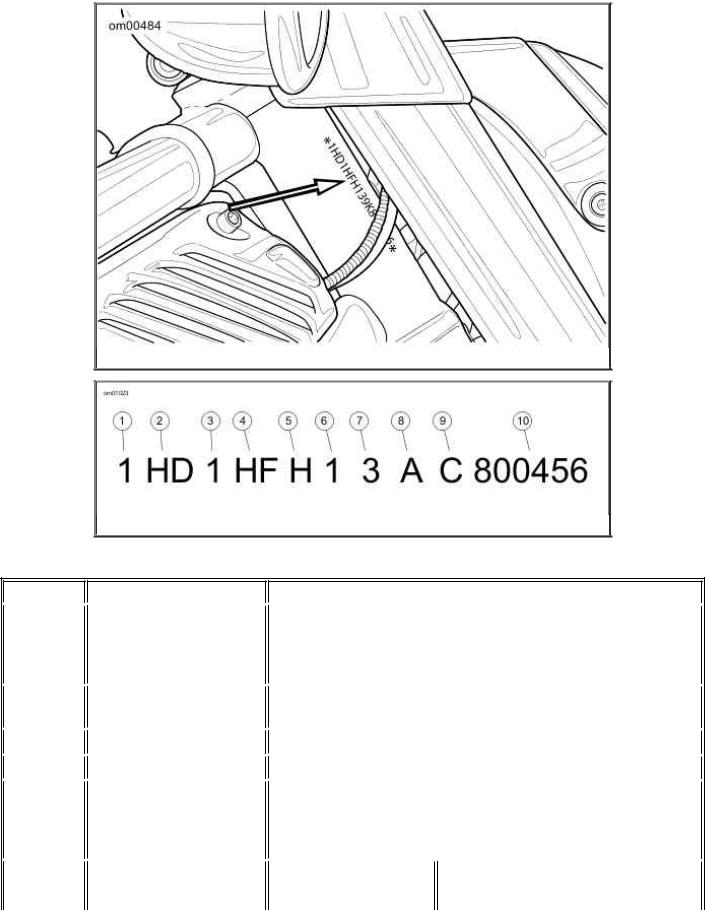
An abbreviated V.I.N. showing the vehicle model, engine type, model year, and sequential number is stamped on the left side of the crankcase below the rear cylinder head.
NOTE:
Always give the full 17digit Vehicle Identification Number when ordering parts or making any inquiry about your motorcycle.
V.I.N. Stamping Location: VRSC Models
Typical HarleyDavidson V.I.N.: 2010 VRSC Models
HarleyDavidson V.I.N. Breakdown: 2010 VRSC Models
|
POSITION |
DESCRIPTION |
POSSIBLE VALUES |
||||
|
1 |
Market designation |
1=Originally manufactured for sale within the United States |
||||
|
5=Originally manufactured for sale outside of the United |
||||||
|
States |
||||||
|
2 |
Manufacturer/vehicle |
HD=HarleyDavidson motorcycle |
||||
|
type |
||||||
|
3 |
Motorcycle type |
1=Heavyweight motorcycle (901 cc and larger) |
||||
|
4 |
Model |
See V.I.N. model table |
||||
|
5 |
Engine type |
H=Revolution®, 1250 cc liquidcooled, fuel injected |
||||
|
J=Revolution®, 1250 cc liquidcooled, fuel injected 105 HP |
||||||
|
HDI only |
||||||
|
6 |
Introduction |
Normal Introduction |
Midyear or Special Introduction |
|||
|
date/calibration |

|
1=Domestic |
2, 4=Domestic |
|||||||
|
3=California |
5, 6=California |
|||||||
|
A=Canada |
B=Canada |
|||||||
|
C=HDI |
D=HDI |
|||||||
|
E=Japan |
F=Japan |
|||||||
|
G=Australia |
H=Australia |
|||||||
|
J=Brazil |
K=Brazil |
|||||||
|
7 |
V.I.N. check digit |
Can be 09 or X |
||||||
|
8 |
Model year |
A=2010 |
||||||
|
9 |
Assembly plant |
C=Kansas City, MO USA |
||||||
|
10 |
Sequential number |
Varies |
||||||
V.I.N. Model Codes: 2010 VRSC Models
|
CODE |
MODEL |
CODE |
MODEL |
|||||
|
HF |
VRSCAW VRod™ |
HH |
VRSCDX Night Rod Special® |
|||||
|
HP |
VRSCF VRod Muscle® |
|||||||
Labels
See Labels: VRSC Models for safety and maintenance labels which were on the vehicle when new. If removed, replacement labels may be purchased for your motorcycle. Refer to Labels: VRSC Models for label descriptions.
NOTE:
Some labels may be available in different languages for destinations outside the U.S. See a HarleyDavidson dealer for all labels available for purchase.
|
Labels: VRSC Models |
||||||||
|
LABEL |
PART NO. |
DESCRIPTION |
LOCATION |
|||||
|
1 |
1534801A |
General |
Rear of airbox cover. |
|||||
|
warnings |
||||||||
|
2 |
1536801A |
Battery |
Under seat, rear of fuel tank. |
|||||
|
warning |
||||||||
|
3 |
1536901 |
Check oil level |
Under seat, rear of fuel tank. |
|||||
|
4 |
1536709 |
Antitampering |
Under seat on right frame tube. |
|||||
|
label |
(VRSCAW)

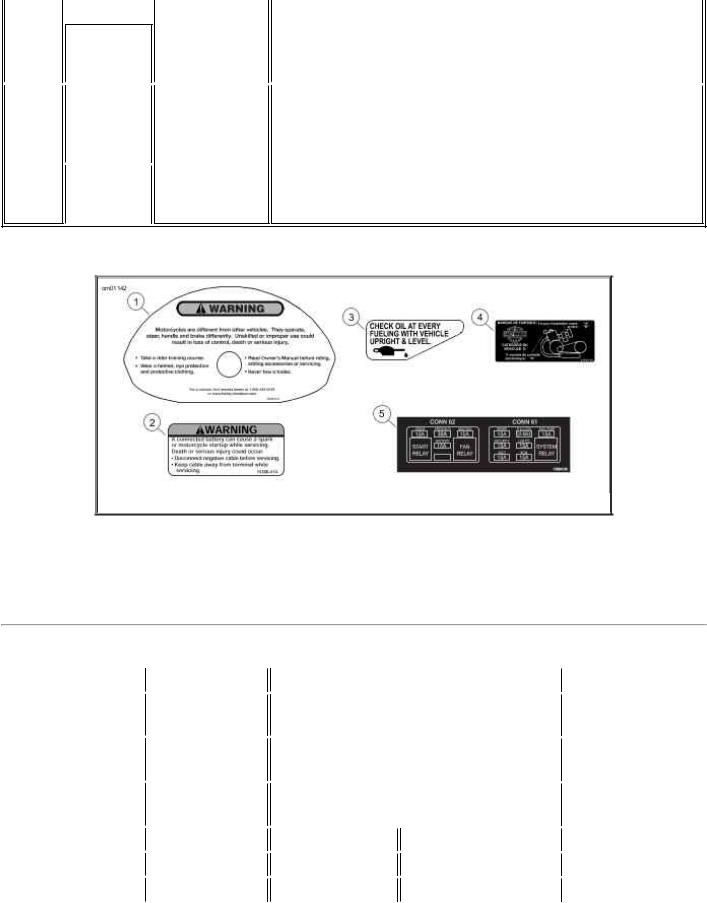


|
(VRSCF) |
||||||
|
5 |
1372508 |
Fuse block |
Label with START RELAY and FAN RELAY is located |
|||
|
labels |
behind front right side cover. Other half of label is on fuse |
|||||
|
(ABS |
block under passenger seat, behind fuel filler. |
|||||
|
models) |
||||||
|
1369407 |
(NonABS)
Labels: VRSC Models
Specifications
Specifications
|
Engine |
||||||
|
ITEM |
SPECIFICATION |
|||||
|
Number of |
2 |
|||||
|
cylinders |
||||||
|
Type |
4cycle, DOHC, 60 degree VType, |
|||||
|
water cooled |
||||||
|
Compression |
11.51 |
|||||
|
ratio |
||||||
|
Bore |
4.134 in. |
105.00 mm |
||||
|
Stroke |
2.835 in. |
72.00 mm |
||||
|
Displacement |
76.28 cu. in. |
1250.00 cu. cm |
||||
NOTE:
Specifications in this publication may not match those of official certification in some markets due to timing of publication printing, variance in testing methods, and/or vehicle differences. Customers seeking officially recognized regulatory specifications for their vehicle should refer to

certification documents and/or contact their respective dealer or distributor.
|
Electrical |
||||||
|
ITEM |
SPECIFICATION |
|||||
|
Timing setting |
Not adjustable |
|||||
|
Battery |
12 volt, 19 amphr, 270 CCA |
|||||
|
Charging system |
ThreePhase, 38amp system |
|||||
|
(439W @ 13V, 2000 rpm, |
||||||
|
489W max power @ 13V) |
||||||
|
Spark plug type |
10R12A |
|||||
|
Spark plug gap |
0.035 in. |
0.89 mm |
||||
|
Spark plug torque |
17 ftlbs |
23 Nm |
||||
Engine Torque
|
MODEL |
TORQUE |
|||||
|
VRSCAW (DOM/HDI) |
84.00 ftlbs |
113.90 Nm |
||||
|
@7000 RPM |
@7000 RPM |
|||||
|
VRSCAW (France |
80.00 ftlbs |
108.48 Nm |
||||
|
opt. Germany) |
@6500 RPM |
@6500 RPM |
||||
|
VRSCAW (Japan) |
77.00 ftlbs |
104.41 Nm |
||||
|
@7000 RPM |
@7000 RPM |
|||||
|
VRSCDX (DOM) |
85.00 ftlbs |
115.26 Nm |
||||
|
@7000 RPM |
@7000 RPM |
|||||
|
VRSCDX (HDI) |
83.00 ftlbs |
112.55 Nm |
||||
|
@7500 RPM |
@7500 RPM |
|||||
|
VRSCDX (France opt. |
78.00 ftlbs |
105.77 Nm |
||||
|
Germany) |
@7000 RPM |
@7000 RPM |
||||
|
VRSCDX (Japan) |
79.00 ftlbs |
107.12 Nm |
||||
|
@7000 RPM |
@7000 RPM |
|||||
|
VRSCF (DOM) |
86.00 ftlbs |
116.62 Nm |
||||
|
@6500 RPM |
@6500 RPM |
|||||
|
VRSCF (HDI) |
85.00 ftlbs |
115.26 Nm |
||||
|
@6500 RPM |
@6500 RPM |
|||||
|
VRSCF (France opt. |
84.00 ftlbs |
113.90 Nm |
||||
|
Germany) |
@6250 RPM |
@6250 RPM |
||||
|
VRSCF (Japan) |
81.00 ftlbs |
109.84 Nm |
||||
|
@6500 RPM |
@6500 RPM |
|||||
Capacities
|
ITEM |
U.S. |
LITERS |
||
|
Fuel tank |
5.00 gal |
18.93 |

|
Low fuel warning lamp on |
1.00 gal |
3.78 |
||||
|
Oil capacity with filter |
5.00 qt. |
4.73 |
||||
|
Coolant capacity |
2.50 qt. |
2.37 |
||||
|
Transmission |
||||
|
ITEM |
SPECIFICATION |
|||
|
Type |
foot shift |
|||
|
Speeds |
5 forward |
|||
|
Gears |
1st, 5th spur gears |
|||
|
2nd, 3rd, 4th helical gears |
||||
|
Drivetrain |
||||
|
COMPONENT |
TYPE |
|||
|
Primary drive |
gear |
|||
|
Final drive |
belt |
|||
|
Rear sprocket |
compensated |
|||
|
Clutch |
hydraulic, slip and assist |
|||
Sprocket Teeth
|
ITEM |
DOMESTIC |
INTERNATIONAL |
||||
|
Transmission |
28 |
30 |
||||
|
Rear wheel |
72 |
72 |
||||
|
Ratio |
0.42 |
0.39 |
||||
Gear Ratios
|
GEAR |
DOMESTIC |
INTERNATIONAL |
||||
|
1st gear |
11.752 |
10.969 |
||||
|
2nd gear |
7.898 |
7.371 |
||||
|
3rd gear |
6.322 |
5.900 |
||||
|
4th gear |
5.459 |
5.095 |
||||
|
5th gear |
4.889 |
4.563 |
||||
Dimensions
|
ITEM |
VRSCAW |
VRSCDX |
VRSCF |
|||||||||||
|
IN. |
MM |
IN. |
MM |
IN. |
MM |
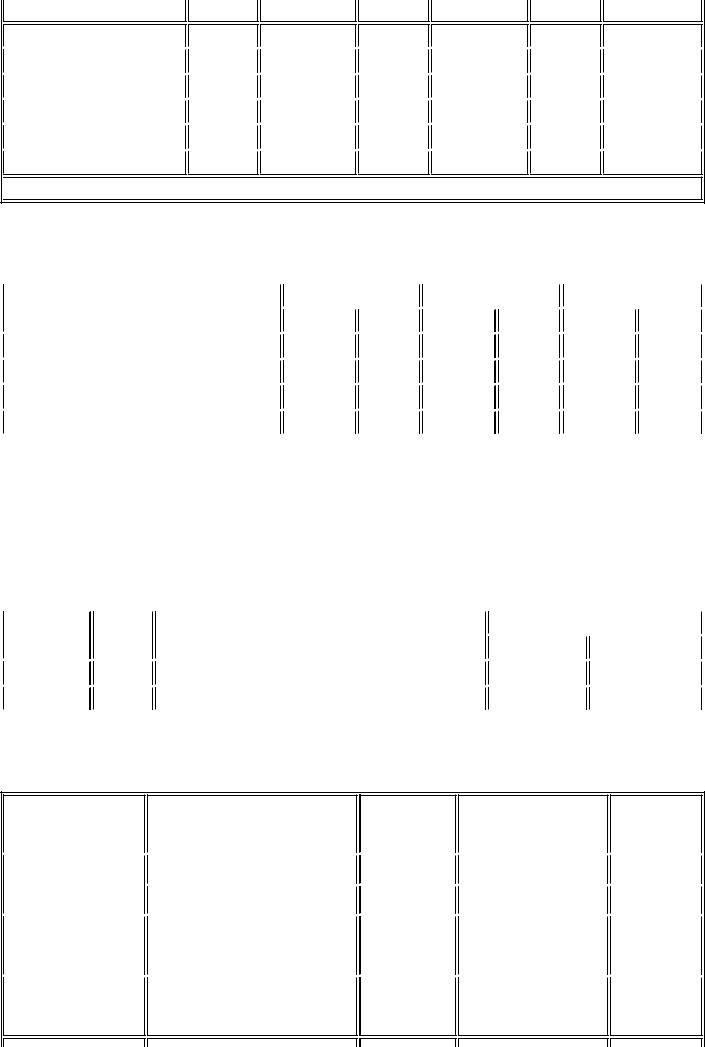
|
Wheelbase |
67.20 |
1706.88 |
67.20 |
1706.88 |
67.00 |
1701.80 |
||||||
|
Overall length |
94.40 |
2397.76 |
94.40 |
2397.76 |
92.80 |
2357.12 |
||||||
|
Overall width |
34.50 |
876.30 |
34.60 |
878.84 |
40.20 |
1021.08 |
||||||
|
Overall height |
47.70 |
1211.58 |
45.50 |
1155.70 |
45.70 |
1160.78 |
||||||
|
Road clearance |
5.00 |
127.00 |
4.20 |
106.68 |
4.80 |
121.92 |
||||||
|
Seat height* |
26.00 |
660.40 |
25.20 |
640.08 |
25.60 |
650.24 |

Weights
|
ITEM |
VRSCAW |
VRSCDX |
VRSCF |
|||||||||||
|
LB. |
KG |
LB. |
KG |
LB. |
KG |
|||||||||
|
Weight (as shipped from factory) |
637.00 |
288.94 |
643.00 |
291.66 |
640.00 |
290.30 |
||||||||
|
GVWR |
1075.00 |
487.61 |
1075.00 |
487.61 |
1075.00 |
487.61 |
||||||||
|
GAWR Front |
377.00 |
171.00 |
377.00 |
171.00 |
377.00 |
171.00 |
||||||||
|
GAWR Rear |
698.00 |
316.61 |
698.00 |
317.61 |
698.00 |
317.61 |
||||||||
NOTE:
Gross Vehicle Weight Rating GVWR (maximum allowable loaded vehicle weight) and corresponding Gross Axle Weight Ratings (GAWR) are given on a label located on the left frame tube above the front engine cylinder.
Tires
|
MOUNT |
SIZE |
NUMBER |
PRESSURE (COLD) |
||||||||
|
PSI |
kPa |
||||||||||
|
Front |
19 in. |
Dunlop D208F 120/70ZR19 |
60W |
36 |
248 |
||||||
|
Rear |
18 in. |
Dunlop D419 240/40R18 79V |
42 |
290 |
|||||||
Bulb Chart
|
LAMP |
DESCRIPTION |
BULBS |
CURRENT DRAW |
HD PART |
||||
|
(ALL LAMPS 12 VOLT) |
REQUIRED |
(AMPERAGE) |
NUMBER |
|||||
|
Headlamp |
low beam |
1 |
4.30 |
6888101 |
||||
|
VRSCAW, VRSCF |
high beam |
1 |
5.10 |
6771701 |
||||
|
Headlamp |
low beam/high beam |
1 |
4.58/5.00 |
6832903 |
||||
|
VRSCDX |
||||||||
|
Position lamp |
position lamp |
1 |
0.36 |
5343697 |
international

|
Tail and stop lamp |
tail/stop lamp |
1 |
0.59/2.25 |
6816889A |
||||||
|
VRSCAW, |
license plate illumination |
2 |
0.33 |
6819395 |
||||||
|
tail/stop lamp international |
1 |
0.42/1.75 |
6816990A |
|||||||
|
VRSCDX |
||||||||||
|
license plate illumination |
2 |
0.37 |
5343697 |
|||||||
|
international |
||||||||||
|
Tail and stop lamp |
Illuminated with LEDs. Replace entire assembly upon failure. |
|||||||||
|
VRSCF |
||||||||||
|
License plate |
Illuminated with LEDs. Replace entire assembly upon failure. |
|||||||||
|
illumination |
||||||||||
|
VRSCF |
||||||||||
|
Turn signal lamp |
front/running |
2 |
2.25/0.59 |
6816889 |
||||||
|
VRSCAW, |
rear |
2 |
2.25 |
6857264B |
||||||
|
front/running international |
2 |
1.75 |
6816384 |
|||||||
|
VRSCDX |
||||||||||
|
rear international |
2 |
1.75 |
6816384 |
|||||||
|
Turn signal lamp |
front/running |
Illuminated with LEDs. Replace entire |
||||||||
|
VRSCF |
assembly upon failure. |
|||||||||
|
rear |
Illuminated with LEDs. Replace entire |
|||||||||
|
assembly upon failure. |
||||||||||
|
Instrument cluster |
Illuminated with LEDs. Replace entire assembly upon failure. |
|||||||||
Tire Data: VRSC Models
Match tires, tubes, air valves and caps to the correct wheel rim. Contact a HarleyDavidson dealer. Mismatching can result in damage to the tire bead, allow tire slippage on the rim or cause tire failure, which could result in death or serious injury. (00023a)
Use only HarleyDavidson approved tires. See a Harley Davidson dealer. Using nonapproved tires can adversely affect stability, which could result in death or serious injury. (00024a)
Tubeless tires are used on all HarleyDavidson cast and disc wheels.
Tire sizes are molded on the tire sidewall. Inner tube sizes are printed on the tube.
HarleyDavidson front and rear tires are not the same.
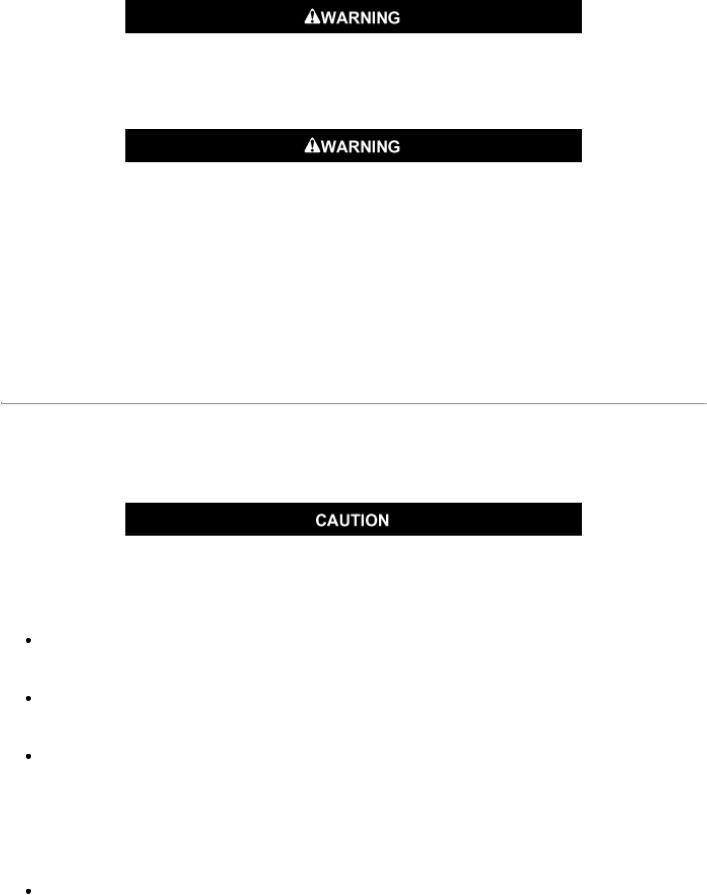
Interchanging front and rear tires can cause tire failure, which could result in death or serious injury. (00026a)
Do not inflate tire beyond maximum pressure as specified on sidewall. Over inflated tires can blow out, which could result in death or serious injury. (00027a)
HarleyDavidson tires are equipped with wear bars that run horizontally across the tread. When wear bars become visible and only 1/32 in. (0.8 mm) tread depth remains, replace tire immediately. Using a worn tire can adversely affect stability and handling, which could result in death or serious injury. Use only HarleyDavidson approved replacement tires. (00090b)
See Specifications for tire pressures and sizes.
Gasoline Blends
Your motorcycle was designed to get the best performance and efficiency using unleaded gasoline. Most gasoline is blended with alcohol and/or ether to create oxygenated blends. The type and amount of alcohol or ether added to the fuel is important.
Do not use gasoline that contains methanol. Doing so can result in fuel system component failure, engine damage and/or equipment malfunction. (00148a)
Gasoline containing METHYL TERTIARY BUTYL ETHER (MTBE): Gasoline/MTBE blends are a mixture of gasoline and as much as 15% MTBE. Gasoline/MTBE blends can be used in your motorcycle.
ETHANOL is a mixture of 10% ethanol (Grain alcohol) and 90% unleaded gasoline. Gasoline/ethanol blends can be used in your motorcycle if the ethanol content does not exceed 10%.
REFORMULATED OR OXYGENATED GASOLINES (RFG): Reformulated gasoline is a term used to describe gasoline blends that are specifically designed to burn cleaner than other types of gasoline, leaving fewer tailpipe emissions. They are also formulated to evaporate less when you are filling your tank. Reformulated gasolines use additives to oxygenate the gas. Your motorcycle will run normally using this type of gas and Harley Davidson recommends you use it when possible, as an aid to cleaner air in our environment.
Do not use race gas or octane boosters. Use of these fuels will damage the fuel system.
Some gasoline blends might adversely affect the starting, driveability or fuel efficiency of the motorcycle. If any of these problems are experienced, try a different brand of gasoline or gasoline with a higher octane blend.
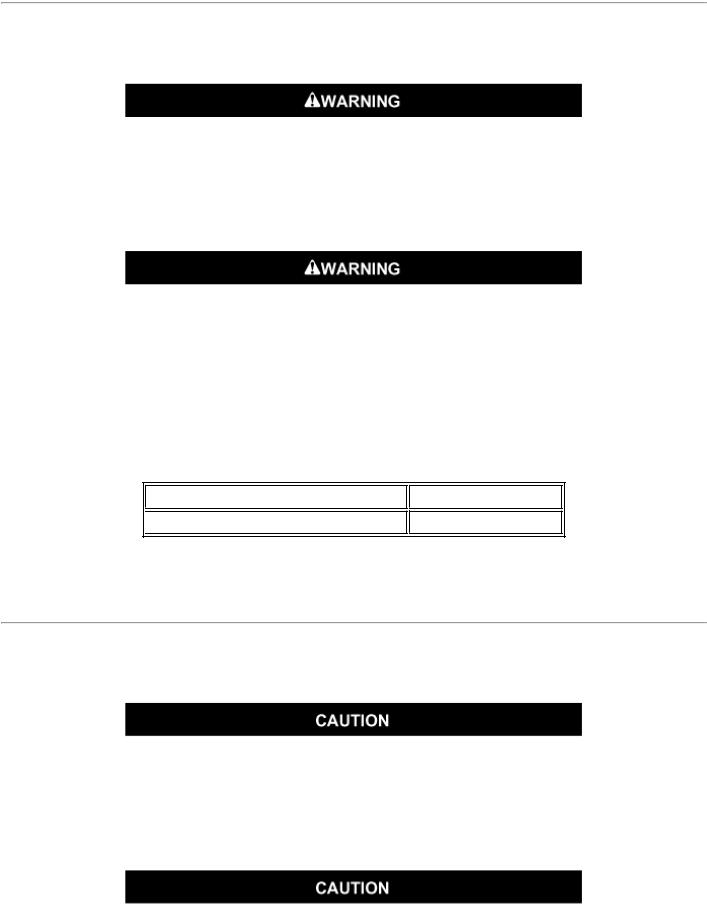
Fuel
Refer to Octane Ratings. Always use a good quality unleaded gasoline. Octane ratings are usually found on the pump.
Avoid spills. Slowly remove filler cap. Do not fill above bottom of filler neck insert, leaving air space for fuel expansion. Secure filler cap after refueling. Gasoline is extremely flammable and highly explosive, which could result in death or serious injury. (00028a)
Use care when refueling. Pressurized air in fuel tank can force gasoline to escape through filler tube. Gasoline is extremely flammable and highly explosive, which could result in death or serious injury. (00029a)
Modern service station pumps dispense a high flow of gasoline into a motorcycle fuel tank making air entrapment and pressurization a possibility.
Octane Ratings
SPECIFICATION

Catalytic Converters
All international (HDI) motorcycles are equipped with catalytic converters. Domestic and destination Japan motorcycles are not equipped with catalytic converters.
Do not operate catalytic converterequipped vehicle with engine misfire. If you operate the vehicle under this condition, the exhaust will become abnormally hot, which can cause vehicle damage, including emission control loss. (00149c)
Use only unleaded fuel in catalytic converterequipped motorcycles. Using leaded fuel will damage the emission control system. (00150b)
Controls and Indicators
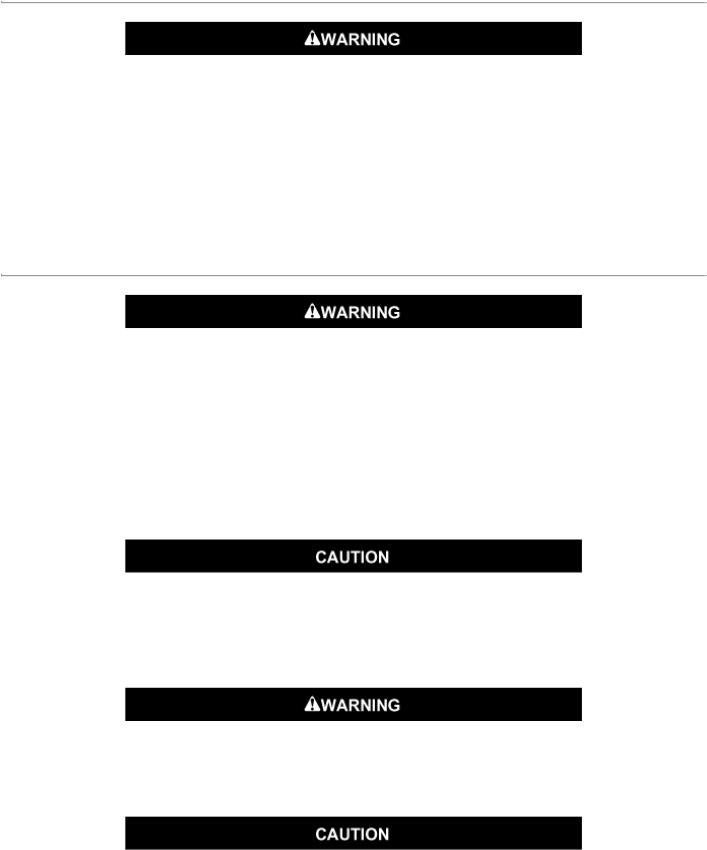
General: Controls and Indicators
Read the CONTROLS AND INDICATORS section before riding your motorcycle. Failure to understand the operation of the motorcycle could result in death or serious injury. (00043a)
Some features explained are unique to certain models. These features may be available as accessories for your HarleyDavidson motorcycle. See a HarleyDavidson dealer for a complete list of accessories that will fit your specific motorcycle.
Ignition Switch: VRSC Models
The automaticon headlamp feature provides increased visibility of the rider to other motorists. Be sure headlamp is on at all times. Poor visibility of rider to other motorists can result in death or serious injury. (00030b)
See the YOUR OWNER’S MANUAL section at the beginning of this manual. Be sure to record all your key numbers in the space provided at the front of this book.
The ignition switch controls electrical functions of the motorcycle.
Protect your vehicle against theft. After parking your motorcycle, lock the steering head and ignition switch. Failure to lock your motorcycle can result in theft and/or equipment damage. (00491c)
Do not operate vehicle with forks locked. Locking the forks restricts the vehicle’s turning ability, which could result in death or serious injury. (00035a)
Do not lubricate barrel locks with petroleum based lubricants or graphite. Inoperative locks may result. (00152a)
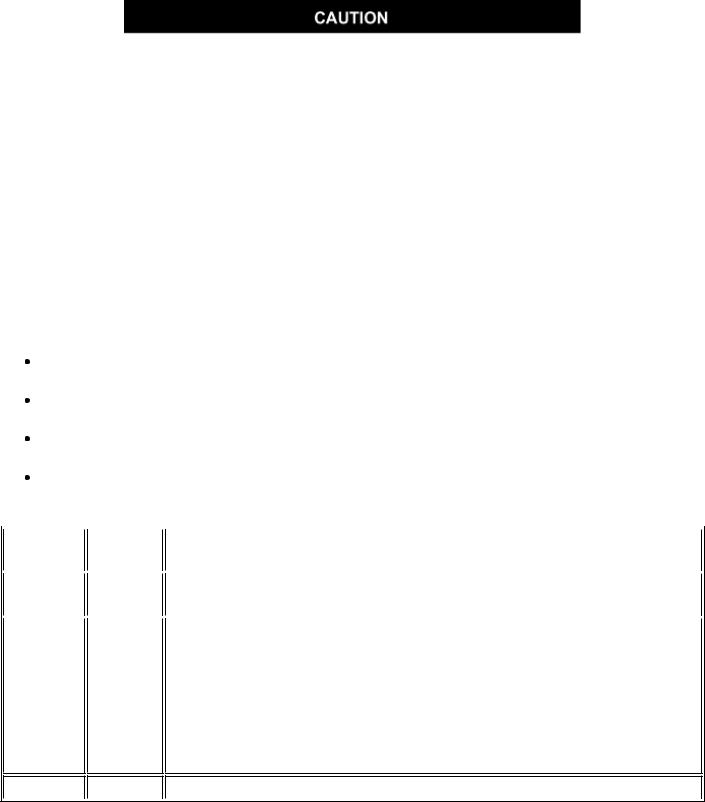
Turn the ignition switch to the OFF position before locking the motorcycle. Leaving the switch in the ACC position will keep the instrument lights on and result in a discharged battery. (00492b)
To review the functions of each switch position, refer to Ignition Switch: VRSC Models.
1.See Ignition Switch: VRSC Models. To remove the key from the ignition, turn it to the OFF position.
2.To remove the key from ignition, pull the key outward.
3.Always turn switch to LOCK position and remove key after operation and when leaving bike parked.
NOTES:
ACCAccessories and hazard warning flasher can be turned on. Instrument lamps are on. Brake lamp and horn can be activated. Key may be removed.
The lamps operate when the switch is in the IGN position, as required by law in some localities.
HarleyDavidson recommends removing key from ignition/fork lock before operating motorcycle. If you do not remove key, it can fall out during operation.
The ignition key also fits the front fork lock.
|
Ignition Switch: VRSC Models |
||||||
|
SWITCH |
REMOVE |
FUNCTIONS |
||||
|
POSITION |
KEY |
|||||
|
OFF |
Yes |
Turns off ignition, lamps and accessories (disconnects battery voltage |
||||
|
from IGN and ACC terminals). |
||||||
|
ACC |
Yes |
Turns on accessories. Hazard warning flashers can be operated. |
||||
|
Instrument lamps are on. Brake lamp and horn can be activated (connects |
||||||
|
battery voltage to ACC terminal). |
NOTE: When switching to the ACC position, a startup diagnostic performs a systems check. The instrument background lighting illuminates, gauge needles sweep their full range of motion and the battery, security, coolant temperature and check engine indicator lamps illuminate.
|
IGN |
Yes |
Turns on ignition, lamps and accessories. |
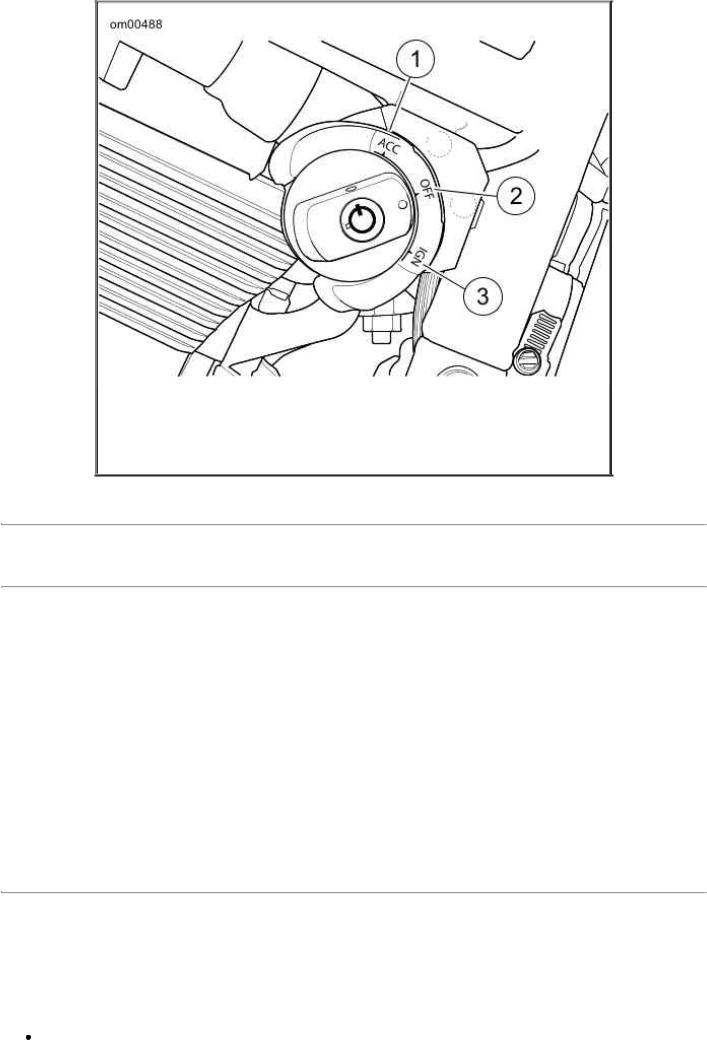
1.Accessory position
2.OFF position
3.Ignition position
Ignition Switch: VRSC Models
Hand Controls: Basic Operation
Electric Starter Switch
NOTE:
Off/run switch MUST be in RUN position to operate engine.
See Handlebar Controls: VRSC Models. The electric starter switch is located on the right handlebar control group. See Starting the Engine: VRSC Models for detailed operation procedures.
1.Put the engine off/run switch in the RUN position and the transmission in neutral. Neutral (green) indicator lamp should be illuminated.
2.See Ignition Switch: VRSC Models. Turn ignition/headlamp key switch to IGNITION and push the START switch to operate starter motor.
Engine OFF/RUN Switch
See Handlebar Controls: VRSC Models. The engine off/run switch (7) turns the ignition power ON or OFF. The engine off/run switch is located on the right handlebar control. Push the top portion of the engine off/run switch to turn off ignition power and shut the engine off. Push the bottom portion of the engine off/run switch to turn on ignition power.
NOTES:
The engine off/run switch must be in the RUN position to start or operate the engine.

The engine off/run switch should be used to shut the engine off.
1.To shut the engine off, push the top of the off/run switch to the ignition OFF position.
2.See Ignition Switch: VRSC Models. Turn the ignition key to the OFF position to turn the ignition power completely OFF.
Throttle Control Grip
See Handlebar Controls: VRSC Models. The throttle control grip (9) is located on the right handlebar control and is operated with the right hand.
To reduce rider fatigue on long trips, a springloaded throttle friction adjustment screw (10) is located at the bottom of the throttle grip clamp on noncruise equipped models.
1.Slowly turn throttle control grip clockwise (toward the front of the motorcycle) to close the throttle (decelerate).
2.Slowly turn throttle control grip counterclockwise (toward rear of motorcycle) to open the throttle (accelerate).
Do not tighten throttle friction adjustment screw to the point where the engine will not return to idle automatically. Overtightening can lead to loss of vehicle control, which could result in death or serious injury. (00031b)
3.Loosen the throttle friction adjustment screw so the throttle returns to the idle position when the hand is removed from the grip.
4.Screw the throttle adjustment screw in to increase friction on grip. This provides a damping effect on throttle motion.
NOTE:
The throttle friction adjustment screw should not be used under normal stop and go operating conditions.
Clutch Hand Lever
Do not position fingers between hand control lever and handlebar grip. Improper hand positioning can impair control lever operation and cause loss of vehicle control, which could result in death or serious injury. (00032a)
See Handlebar Controls: VRSC Models. The clutch hand lever (1) is located on the left handlebar and is operated with the fingers of the left hand.
1. Slowly pull clutch hand lever in against handlebar grip to fully disengage clutch.

2.Shift to first gear using the gear shifter lever. See Shifting Gears.
3.Slowly release the clutch hand lever to engage clutch.
A clutch switch is incorporated into the left handlebar switch assembly. It enables the rider to start the vehicle in any gear (or in neutral) as long as the clutch lever is pulled in. If the clutch is not disengaged, the vehicle will not start.
Horn Switch
See Handlebar Controls: VRSC Models. The horn is operated by pushing on the horn switch
(2) located on the left handlebar control.
Headlamp Dimmer Switch
See Handlebar Controls: VRSC Models. The headlamp dimmer switch (3) is located on the left handlebar. The switch has two positions to activate the headlamps high or low beams.
Press the top of the headlamp dimmer beam switch to activate the high beam. Press the bottom of the headlamp dimmer switch to return to the low beam.
See Instrument Lamps. The (blue) high beam indicator lamp will illuminate when the high beam is on.
Turn Signal Switches
See Handlebar Controls: VRSC Models. Each handlebar control group contains a turn signal switch.
The right turn signal switch (11) operates the right front and right rear flashing lamps. The left turn signal switch (4) operates the left front and left rear flashing lamps.
NOTE:
Front turn signal lamps also function as running lamps (except International models).
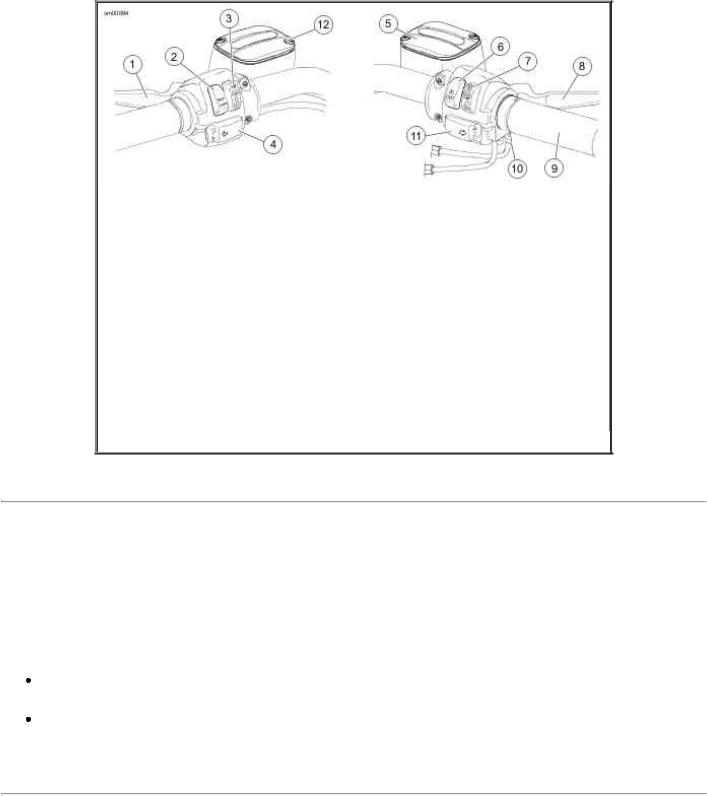
1.Clutch hand lever
2.Horn switch
3.Headlamp dimmer switch
4.Left turn signal switch
5.Front brake master cylinder reservoir
6.Electric starter switch
7.Engine off/run switch
8.Brake hand lever
9.Throttle control grip
10.Throttle friction adjusting screw
11.Right turn signal switch
12.Clutch master cylinder reservoir
Handlebar Controls: VRSC Models
Turn Signal Switch Operation
The turn signal switches are used by the turn signal module to control turn signal operation based on vehicle speed, vehicle acceleration and turn completion.
Momentarily depress the desired turn signal switch. The turn signal lamps will begin and continue flashing until they are manually or automatically cancelled. As long as the motorcycle is stationary, the signals will flash.
NOTES:
If you are signaling to turn in one direction and you depress the switch for the opposite turn signal, the first signal is cancelled and the opposite side begins flashing.
If you want to stop the lamps from flashing, briefly depress the turn signal switch a second time. The turn signal lamps will stop flashing.
Hazard Warning 4Way Flasher
Use the following method to activate the fourway flashers.
1.With the ignition key ON and security system disarmed (if equipped), press the left and right turn signal switches at the same time.
2.Turn the ignition key OFF and arm the security system if present and desired. The fourway flashers will continue for two hours.
3.To cancel fourway flashing, disarm the security system if necessary, turn the ignition key ON and press the left and right turn signal switches at the same time.
This system allows a stranded vehicle to be left in the fourway flashing mode and secured until
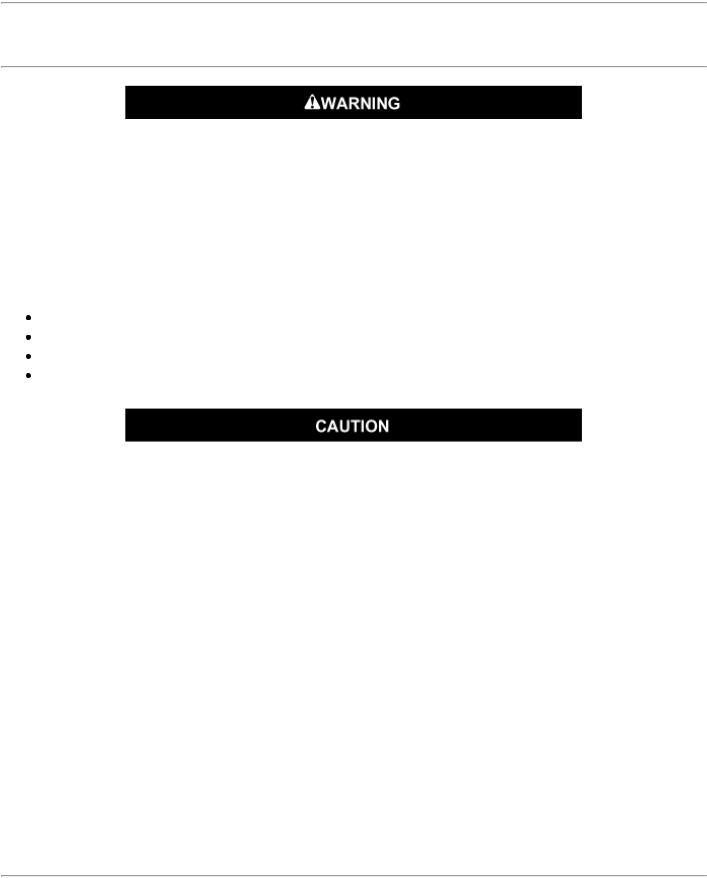
help is found.
Instruments
Speedometer
Travel at speeds appropriate for road and conditions and never travel faster than posted speed limit. Excessive speed can cause loss of vehicle control, which could result in death or serious injury. (00008a)
See Instrument Cluster: VRSC Models. The speedometer registers miles per hour (U.S. models) or kilometers per hour (international models) of forward speed. The speedometer also provides the following selectable functions:
Odometer
Trip odometers A and B 12 or 24 hour clock Fuel range
Never attempt to tamper with or alter the vehicle odometer. This is illegal. Tampering with or altering a vehicle odometer may cause equipment damage. (00160a)
The speedometer has a single display window for the above functions.
1.See Instrument Cluster: VRSC Models. Pressing the function switch with the ignition switch in any position will activate the odometer reading and time. Time and mileage or kilometers may be checked without unlocking ignition switch. Press and release function switch once to view odometer. Press and release switch again to display time.
2.To check mileage on trip odometers, the ignition switch must be in the ACC or IGNITION position. Press and release the function switch until the desired trip odometer reading is displayed. An ‘A’ or ‘B’ in the upper left of the display window identifies trip odometers.
3.To reset or zero trip odometers, have desired odometer (A or B) in display window. Press function switch and hold switch for 23 seconds. The trip odometer will be reset to zero.
4.Repeat the previous step if you wish to zero both trip odometers.
Setting Clock
1.Turn the ignition switch to ACC or IGNITION.
2.See Instrument Cluster: VRSC Models. Press function switch until time (hour and minutes) is displayed. Press and hold the function switch for five seconds or until 12HR

begins to blink in the speedometer display window. Release the button.
3.Press and release the function switch once to advance to a blinking 24HR military style time display. Each time you press and release the button, the display will switch between 12HR and 24HR.
4.When the desired time style is displayed, press and hold the function switch for five seconds. The display will switch to the time display with the hours blinking.
5.Press and release the function switch repeatedly to advance the hours. Each time you press and release the switch, the display will advance one hour.
NOTE:
No AM or PM time setting is required. When correct hour is reached, press and hold function switch to advance to minute setting.
6.When the correct hour is displayed, press and hold the function switch for five seconds. The minutes display will start blinking.
7.Press and release the function switch repeatedly to advance the minutes display. Each time you press and release the button, the display will advance one minute.
8.When the correct minutes are displayed, press and hold the function switch for five seconds. The minutes display will stop blinking, indicating that the clock has been set.
9.Turn the ignition switch OFF.
Fuel Range Function
The fuel range function shows the approximate mileage available with the amount of fuel left in the fuel tank.
1.With the ignition switch in the ACC or IGNITION position, press function switch until fuel range function is displayed, as indicated by the letter ‘r’ in the left side of the odometer display. The calculated remaining distance (miles or kilometers) to empty is displayed, based on the amount of fuel in tank. Range can be accessed at any time using the function switch.
2.When the low fuel warning lamp illuminates, the range feature will automatically be displayed in the odometer unless this automatic popup feature is disabled by a press and hold of the function switch while in range display mode. Automatic range popup feature will show that it is disabled by blinking twice. Likewise, automatic range popup can be reactivated by a press and hold of the function switch. Range will blink once when the automatic popup feature is reenabled.
NOTE:
Refer to Capacities. When the low fuel warning lamp turns on, refuel as soon as possible.
The range display is only updated when the vehicle is moving.
3.After the range calculation reaches 10 miles 16 kilometers remaining, the range display will display «r Lo» to indicate that the vehicle will shortly run out of fuel.
4.Resetting the low fuel warning lamp and range requires an ignition cycle change.
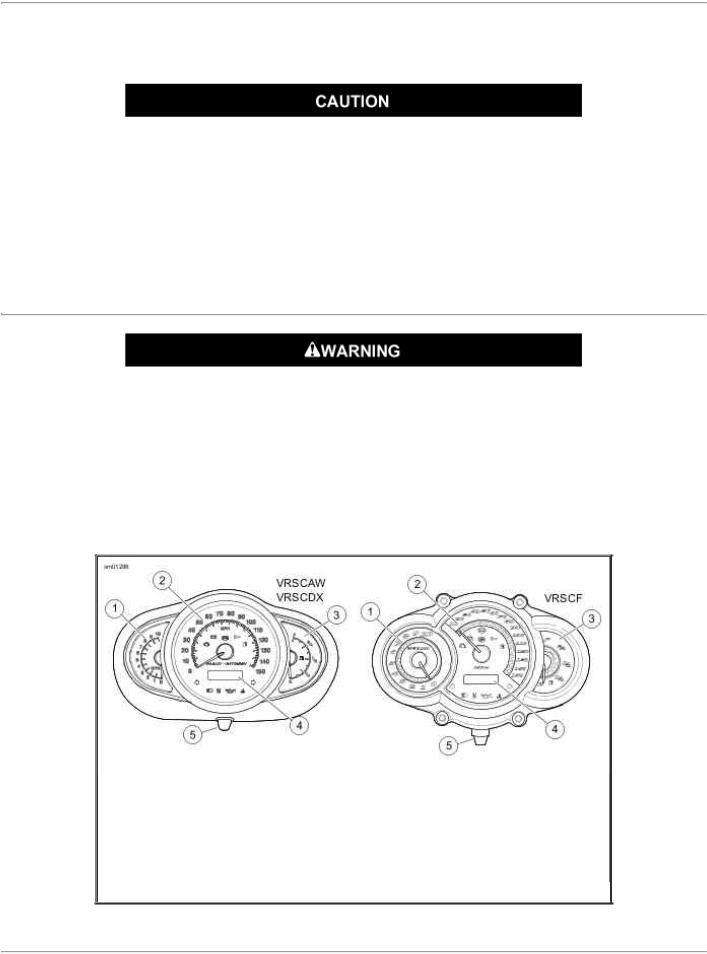
Tachometer
See Instrument Cluster: VRSC Models. The tachometer registers the engine speed in revolutions per minute (RPM).
See OPERATING RECOMMENDATIONS section. Do not operate the engine above maximum safe RPM as shown under OPERATION (red zone on tachometer). Lower the RPM by upshifting to a higher gear or reducing the amount of throttle. Failure to lower RPM may cause equipment damage. (00159a)
Tip Indicator Lamp
If tip occurs, check all controls for proper operation. Restricted control movement can adversely affect the performance of the brakes, clutch or ability to shift, which could result in loss of vehicle control and death or serious injury. (00350a)
Should motorcycle be tipped over, the word «tip» will appear in the odometer window. Engine will not start until reset. To reset, cycle ignition/headlamp key switch ONOFFON.
1.Tachometer
2.Speedometer
3.Fuel gauge
4.Odometer/tripodometer/clock/fuel range display
5.Function switch
Instrument Cluster: VRSC Models
Instrument Lamps
Engine Check Lamp

See Instrument Lamps. The engine check lamp is located inside the instrument cluster. Its purpose is to indicate whether or not the engine/engine management system is operating normally. The engine lamp color is amber.
The engine lamp normally comes on when the ignition is first turned on and remains on for approximately 4 seconds, as the engine management system runs a series of selfdiagnostics.
If the engine lamp comes on at any other time, see a HarleyDavidson dealer.
Low Fuel Lamp
See Instrument Lamps. The low fuel lamp lights up to indicate that the fuel level is low. The low fuel lamp color is amber. Refer to Capacities.
If the low fuel lamp remains lit after adding fuel or filling the fuel tank, see your HarleyDavidson dealer.
Battery Discharge Lamp
See Instrument Lamps. The battery lamp indicates either overcharging or undercharging of the battery. Refer to HarleyDavidson Smart Security System.
Security System Lamp
See Instrument Lamps. The security system lamp will illuminate when the security system is armed. Refer to HarleyDavidson Smart Security System.
If the security system lamp remains lit after the security system is disarmed, see your Harley Davidson dealer.
ABS Lamp
See Instrument Lamps. On ABS equipped models, the amber ABS indicator lamp begins to flash at key ON to indicate that the system is operation. It continues to flash until motorcycle speed exceeds 3 mph 5 km/h . Continuous illumination of the lamp will only occur when ABS detects that the system is malfunctioning. In the diagnostic mode, the lamp will also illuminate to indicate the presence of diagnostic trouble codes (DTCs). See a HarleyDavidson dealer for service.
If ABS lamp remains on continuously, the ABS is not operating. The standard brake system is operational, but wheel lock up can occur. Contact a HarleyDavidson Dealer to have ABS repaired. A locked wheel will skid and can cause loss of vehicle control, which could result in death or serious injury. (00361a)
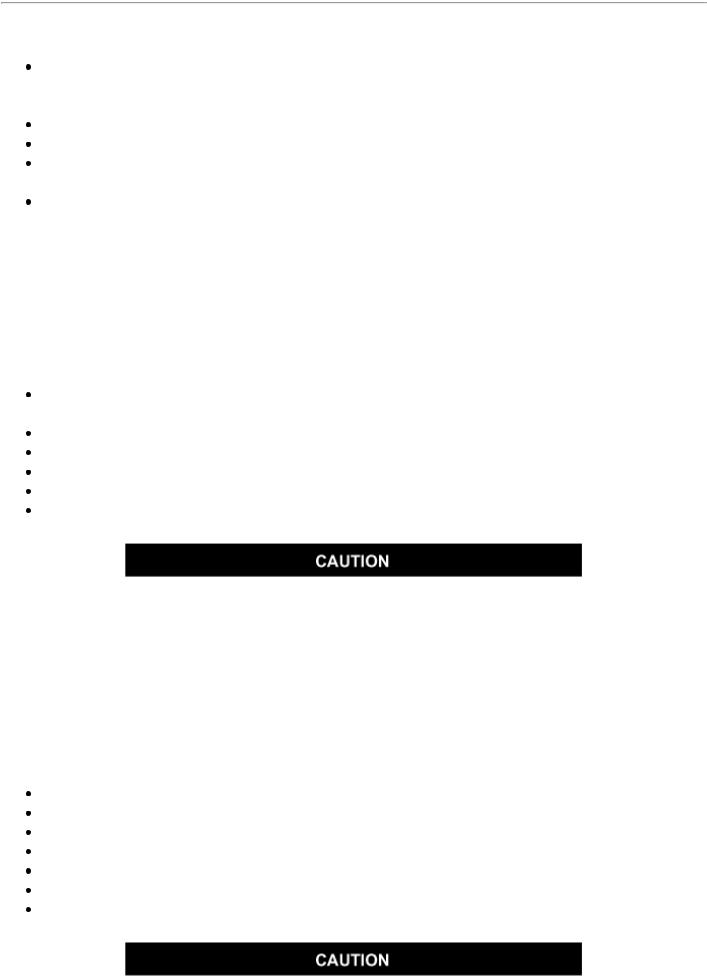
Indicator Lamps
See Instrument Lamps. Indicator lamps are located along the bottom of the instrument cluster.
The two green TURN indicator lamps flash when turn signals are activated; therefore, flashing indicates the chosen turn direction. When the 4way hazard flashers are operating, both turn indicators flash simultaneously.
The blue HIGH BEAM indicator lamp, when lit, signals high beam headlamp operation. The green NEUTRAL lamp, when lit, signals the transmission is in neutral gear.
The red ENGINE COOLANT TEMPERATURE indicator lamp, when lit, signals the coolant temperature has exceeded 243° F (117° C).
The red OIL PRESSURE indicator lamp, when lit, signals that oil is not circulating through the engine.
NOTE:
The OIL PRESSURE indicator lamp will glow when the ignition is turned on prior to starting the engine. With the engine running, the lamp should be off when engine speed is above idle.
Several other circumstances that could cause the red oil pressure indicator lamp to illuminate include:
An insufficient or diluted oil supply causing the oil pressure indicator lamp to remain lit at speeds above idling.
An oil feed clogged with ice and sludge in freezing weather, preventing oil circulation. A grounded oil signal switch wire.
A faulty oil signal switch.
A damaged or improperly installed check valve. Trouble with the oil pump.
If the oil pressure indicator lamp remains lit, always check the oil supply first. If the oil supply is normal and the lamp is still lit, stop the engine at once and do not ride further until the trouble is located and the necessary repairs are made. Failure to do so may result in engine damage. (00157a)
Several other circumstances that could cause the red engine coolant temperature indicator lamp to illuminate include:
Cooling fan malfunction.
Low coolant level.
Thermostat malfunction.
Temperature gauge malfunction.
Blocked coolant passages.
Radiator cap malfunction.
Coolant malfunction.
If the engine coolant temperature indicator lamp remains
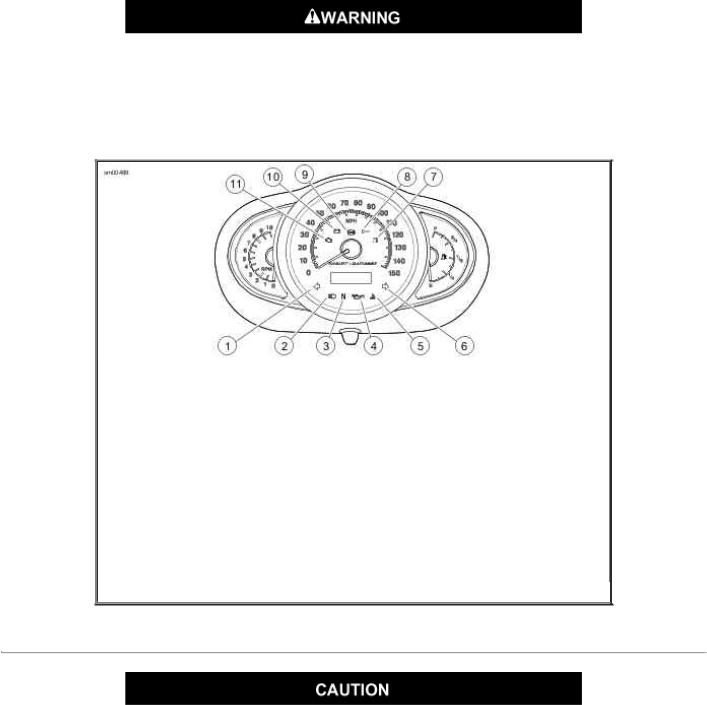
lit, always check the coolant level. If the coolant level is normal and the lamp is still lit, stop the engine at once and do not ride further until the trouble is located and the necessary repairs are made. Failure to do so may result in engine damage. (00158a)
Do not remove radiator filler cap when engine is hot. The cooling system is under pressure and hot coolant and steam can escape, which could cause severe burns. Allow engine to cool before servicing the cooling system. (00091a)
1.Left turn
2.High beam
3.Neutral
4.Oil
5.Engine coolant
6.Right turn
7.Low fuel lamp
8.Security system lamp
9.ABS lamp
10.Battery discharge lamp
11.Engine check lamp
Instrument Lamps
Gear Shift Lever
The clutch must be fully disengaged before attempting a gear shift. Failure to fully disengage the clutch can result in equipment damage. (00182a)
See Gear Shift Lever (Downshift): VRSC Models. The gear shift lever is located on the left side of the motorcycle and is operated with the left foot. The transmission is a five speed sequential gear box.
1.Push the gear shift lever all the way down (full stroke) to shift the transmission to the next lower gear.

2.Lift the gear shift lever all the way up (full stroke) to shift the transmission to the next higher gear.
NOTES:
Release the gear shift lever after each gear change.
The lever must return to its central position before another gear change can be made.
First gear is the last gear position that can be found by pushing the gear shift lever full stroke downward.
Neutral is located between first and second gear. The green neutral indicator lamp on the dash will illuminate when the transmission is in neutral.
To shift from first gear to neutral, lift the gear shift lever 1/2 of its full stroke.
When the motorcycle is standing still and the engine is not running, shifting gears requires a different technique. Before shifting in this condition, move the motorcycle backward and forward with the clutch fully disengaged (clutch lever pulled in). While maintaining slight pressure on the shift lever, shift from one gear to another.
Even with the engine running and the motorcycle standing still, difficulty may be experienced in shifting gears. This difficulty occurs because transmission gears are not turning and shifting parts are not lined up to permit engagement.
When difficulty of shifting gears is experienced, do not under any circumstances, attempt to force the shift. The results of such abuse will be a damaged or broken shifter mechanism. (00161a)
See Shifting Gears for more information.

Gear Shift Lever (Downshift): VRSC Models
Brake System
General
The rear brake pedal controls the rear wheel brake and is located on the motorcycle’s right side. Operate the rear brake pedal with the right foot.
The front brake hand lever controls the front wheel brake and is located on the right handlebar. Operate the hand lever with the fingers of the right hand.
Do not position fingers between hand control lever and handlebar grip. Improper hand positioning can impair control lever operation and cause loss of vehicle control, which could result in death or serious injury. (00032a)
Some models are equipped with an antilock braking system.
NonABS Brake System
Apply brakes uniformly and evenly to prevent wheels from locking. Use front and rear brakes equally for best results.

Do not apply brake strongly enough to lock the wheel. A locked wheel will skid and can cause loss of vehicle control, which could result in death or serious injury. (00053a)
Antilock Brake System (ABS)
HarleyDavidson’s AntiLock Brake System assists the rider in maintaining control when braking in a straightline emergency situation. ABS operates independently on front and rear brakes to keep the wheels rolling and prevent uncontrolled wheel lockups either on dry pavement or on slick surfaces such as gravel, leaves or when riding in wet conditions.
ABS: How It Works
The ABS monitors sensors at the front and rear wheels to determine wheel speed. If the system detects one or both wheels are slowing down too quickly, which indicates they are close to locking, or if the deceleration rate does not match a criteria stored in memory, the ABS reacts. The system rapidly opens and closes valves to modulate the brake caliper pressure utilizing only the brake lever/pedal pressure being applied by the rider. During ABS activation, the system provides the electronic equivalent of manually pumping the brakes and is capable of cycling up to seven times per second.
The rider will recognize ABS activation by the slight pulsing sensation in the hand lever or the rear brake pedal. The pulsing sensation may also be accompanied by a clicking sound from the ABS module. Both are the result of normal operation. Refer to ABS Symptoms and Conditions.
ABS: How To Use
While an advantage in emergency braking, ABS is not a substitute for safe riding. The safest way to stop a motorcycle is upright with both wheels straight.
HarleyDavidson ABS is a manual assist system. When in an emergency stopping situation, maintain pressure on the brakes through all ABS events. Do not modulate or «pump» the brake controls. The wheels won’t lock until the end of the stop when motorcycle speed reaches approximately four miles per hour and ABS is no longer needed.
ABS cannot prevent lockup of rear wheel due to engine braking. ABS will not aid in cornering or on loose/uneven surfaces. A locked wheel will skid and can cause loss of vehicle control, which could result in death or serious injury. (00362a)
More information is available at www.harleydavidson.com/abs.

ABS: Tires and Wheels
ABS motorcycles must always use tires and wheels that are the same as the original equipment. The ABS monitors the rotational speed of the wheels through individual wheel speed sensors. Changing to different diameter wheels or different sized tires can alter the rotational speed. This can upset the calibration of the ABS and have an adverse effect on its ability to detect and prevent uncontrolled wheel lockups. Tire inflation pressure that is significantly low also can have an adverse effect.
|
ABS Symptoms and Conditions |
||||
|
SYMPTOM |
CONDITION |
|||
|
Pulsing |
Normal condition. |
|||
|
brake lever |
||||
|
or pedal |
||||
|
during an |
||||
|
ABS event |
||||
|
Clicking |
Normal condition. |
|||
|
sound |
||||
|
during an |
||||
|
ABS event |
||||
|
ABS lamp |
Normal condition key turned to IGNITION speed under 3 mph 5 km/h . |
|||
|
flashing |
||||
|
Perceived |
Normal condition most noticeable when braking with one brake (front only or rear |
|||
|
«surge» |
only). Result of a reduction in deceleration which can be caused by cracks or |
|||
|
while |
bumps in road, engine braking (high engine RPMs causing the rear wheel to slow |
|||
|
braking |
down), hard braking at slow speeds, and other conditions. This is due to ABS |
|||
|
modulating caliper brake pressure to prevent uncontrolled wheel lock. |
||||
Temporarily Normal condition engine braking (high engine RPMs causing the rear wheel to stiff rear slow down) or down shifting can activate ABS. If applying the rear brake at the brake pedal same time or immediately after, the ABS may be closing a valve to prevent
pressure to the rear brake. This is due to ABS modulating caliper brake pressure to prevent uncontrolled wheel lock.
|
Tire chirp |
Normal condition depending on surface, tire can chirp without locking the wheel. |
|
|
Black mark |
Normal condition depending on surface, tire can leave a black mark without |
|
|
on |
locking the wheel. |
|
|
pavement |
||
Wheel lock at low speed
Normal condition ABS will not activate on front wheel below 3 mph 5 km/h or on rear wheel below 5 mph 8 km/h .
Jiffy Stand
Always park motorcycle on a level, firm surface. An unbalanced motorcycle can fall over, which could result in

death or serious injury. (00039a)
The jiffy stand is located on the left side of the motorcycle and swings outward to support the motorcycle for parking.
The jiffy stand locks when placed in the full forward (down) position with vehicle weight on it. If the jiffy stand is not in the full forward (down) position with vehicle weight on it, the vehicle can fall over which could result in death or serious injury. (00006a)
Be sure jiffy stand is fully retracted before riding. If jiffy stand is not fully retracted, it can contact the road surface causing a loss of vehicle control, which could result in death or serious injury. (00007a)
Rear View Mirrors
Objects in mirrors are closer than they appear. Use caution when judging distance of objects in mirrors. Failure to judge correct distances could result in death or serious injury. (00033a)
Your vehicle is equipped with two convex rear view mirrors.
This type of mirror is designed to give a much wider view to the rear than a flat mirror. However, cars and other objects seen in this type of mirror will look smaller and farther away than they actually are.
Use caution when judging the size or relative distance of objects seen in rear view mirrors. Always adjust the rear view mirrors to clearly reflect the area behind the motorcycle before riding.
NOTE:
Adjust mirrors so you can see a small portion of your shoulders in each mirror. This will help you establish the relative distance of vehicles to the rear of your motorcycle.
Fuel Filler Cap: VRSC Models
See Fuel Filler Cap: VRSC Models. The fuel filler cap is located under the seat.
To open, turn the fuel filler cap counterclockwise and lift up. To close, turn the fuel filler cap clockwise until it clicks. The ratchet action of the cap prevents overtightening.
See SAFE OPERATING RULES section and review safety procedures.

Do not spill fuel onto the motorcycle while refueling. Immediately wipe up fuel spills on your motorcycle. Fuel can cause damage to cosmetic surfaces. (00147b)
Use only unleaded fuel in catalytic converterequipped motorcycles. Using leaded fuel will damage the emission control system. (00150b)
Do not store motorcycle with gasoline in tank within the home or garage where open flames, pilot lights, sparks or electric motors are present. Gasoline is extremely flammable and highly explosive, which could result in death or serious injury. (00003a)
Avoid spills. Slowly remove filler cap. Do not fill above bottom of filler neck insert, leaving air space for fuel expansion. Secure filler cap after refueling. Gasoline is extremely flammable and highly explosive, which could result in death or serious injury. (00028a)

Fuel Filler Cap: VRSC Models
Fork Lock: VRSC Models
Protect your vehicle against theft. After parking your motorcycle, lock the steering head and ignition switch. Failure to lock your motorcycle can result in theft and/or equipment damage. (00491c)
See Fork Lock: VRSC Models. VRSC models have the fork lock incorporated in the steering head on the right hand side.
Do not operate vehicle with forks locked. Locking the forks restricts the vehicle’s turning ability, which could result in death or serious injury. (00035a)
Using the fork lock immediately after parking your motorcycle will discourage unauthorized use or theft when parking your motorcycle.
1.Turn the fork to the full left position.
2.Insert the ignition key into the fork lock.
3.Push down on the fork lock switch and turn to the full clockwise position.

4. Remove the ignition key.
1.Lock
2.Unlock
Fork Lock: VRSC Models
Shock Absorbers
General
The rear shock absorber spring preload can be adjusted for the weight the motorcycle is to carry and has five preload graduations. Notice the adjustment settings as you turn the collar.
The average weight solo rider might use the extended spring preload position (adjustment setting 1 or 2).
Use the adjustment setting numbers as a reference for equal adjustment of shock absorbers on both the right and left side of the motorcycle. A heavy solo rider might require additional preload or pressure (adjustment setting 3).
Adding a passenger may require maximum preload (adjustment setting 5).
Adjustment
Adjust both shock absorbers equally. Improper adjustment can adversely affect stability and handling, which could result in death or serious injury. (00036b)

Do not turn the shock absorber adjustment collar clockwise beyond adjustment setting 5. Doing so may result in equipment damage. (00166b)
1.See Rear Shock Absorber Adjustment: VRSCF Model. Place a SPANNER WRENCH 9482075A (VRSCF) or 9470052C (other models) around the lower collar of the shock absorber.
NOTE:
See Rear Shock Absorber Adjustment: VRSCAW/VRSCDX Models. VRSCAW/VRSCDX models have a cover over the preload adjustment collar. Insert teeth on spanner wrench into holes in the collar cover.
2.See Preload Adjustment. To adjust the rear shock absorber spring preload, turn the spring adjusting cam to the desired position. When returning to offcam position, cams should be backed off in opposite direction.
a.Turn the collar clockwise (toward higher numbers) to increase the preload.
b.Turn the collar counterclockwise to decrease the preload.
Rear Shock Absorber Adjustment: VRSCF Model

Rear Shock Absorber Adjustment: VRSCAW/VRSCDX Models
1.Minimum preload adjustment
2.Maximum preload adjustment
Preload Adjustment
SideMounted License Plate
See SideMounted License Plate Assembly. Some models are equipped with a convertible sidemounted license plate assembly. The license plate must be in the extended position during operation. Due to local regulations, this feature may not be available in all locations.

The sidemounted license plate assembly includes an LED lamp module. If the LED lamp fails, see a HarleyDavidson dealer for assembly replacement.
SideMounted License Plate Assembly
Mirrors: VRSCF Model
See Mirror/Turn Signal Alignment: VRSCF Model. On the VRSCF model, the mirror stems operate as front turn signals. Use the following procedure to properly align the front turn signals and position the rear view mirrors.
NOTE:
See Mirror/Turn Signal Fasteners: VRSCF Model. Always loosen fasteners before changing the position of the turn signals or mirrors. Simply pushing the mirror face or stem may cause damage to the assembly.
1.See Mirror/Turn Signal Fasteners: VRSCF Model. Loosen the nut on the mirror stem. Adjust the front turn signal so it is directed straight ahead, with the lighted surface facing the forward direction of the vehicle as shown in Mirror/Turn Signal Alignment: VRSCF Model.
2.Tighten nut to 6575 inlbs (7.48.5 Nm).
3.Loosen the screw on the rear of the mirror. Adjust the mirror to desired position (without changing the orientation of the front turn signal).
4.Tighten screw to 4050 inlbs (4.55.7 Nm).

1.Front turn signal (perpendicular to forward direction of vehicle)
2.Mirror
Mirror/Turn Signal Alignment: VRSCF Model

1.Mirror screw
2.Mirror stem nut
Mirror/Turn Signal Fasteners: VRSCF
Model
HarleyDavidson Smart Security System
HarleyDavidson Smart Security System
Components
See Security Module with Antenna (shown removed). The HarleyDavidson Smart Security System (HDSSS) consists of a HandsFree Security Module (HFSM) (1) and a HandsFree Antenna (2) mounted on the motorcycle, and a HandsFree Fob carried by the rider/passenger.
After parking the motorcycle, turn the ignition key to OFF and the Smart Security System will automatically arm within five seconds. While armed, the starter and ignition are disabled and the rider may leave the motorcycle knowing that the module will activate an alarm if someone tampers with the ignition or attempts to move the motorcycle.
If the fob is present, the module will automatically disarm when the ignition key is turned to IGNITION or ACCESS.
NOTE:
Do not relocate the module or the antenna on the motorcycle.

Options
Several options are available for the HarleyDavidson Smart Security System from the Harley Davidson Genuine Motor Accessories and Motor Parts catalog. Options include:
Smart Siren and Smart Siren II.
Security Pager and Security Pager Receiver II.
Replacement Fobs.
See a HarleyDavidson dealer for details.
1.HandsFree Security Module
2.HandsFree Antenna
Security Module with Antenna (shown removed)
FCC Regulations
FCC ID: L2C0027TR IC ID: 3432A0027TR
FCC ID: L2C0028TR IC ID: 3432A0028TR
This device complies with Part 15 of the FCC Rules and with RSS210 of Industry Canada rules. Operation is subject to the following two conditions:
(1) This device may not cause harmful interference, and (2) This device must accept any

interference received, including interference that may cause undesired operation.
NOTE:
Changes or modifications not expressively approved by the party responsible for compliance could void the user’s authority to operate the equipment.
The term «IC:» before the radio certification number only signifies that Industry Canada technical specifications were met.
HandsFree Fob
Fob Assignment
See HandsFree Fob: Smart Security System. Handsfree fobs are electronically assigned to the HarleyDavidson Smart Security System by a HarleyDavidson dealer so that the module can recognize a fob’s unique signal. Only two fobs can be assigned to the module at any one time.
Replacement fobs can be purchased from a dealership but can only be assigned to the motorcycle by a trained HarleyDavidson technician.
NOTES:
The reusable label found on the fob packaging lists the serial number of the fob. For reference, affix the label to a blank «NOTES» page in this Owner’s Manual.
The serial number of the fob is also found on the inside of the fob. See Fob Battery.
The module will arm only if the fob has been assigned by a HarleyDavidson dealer and a Personal Identification Number (PIN) has been entered in the system. The PIN should be recorded on the Personal Information page in the front of this Owner’s Manual and on the removable wallet card.
Should the rider misplace the fob or if the fob fails, the rider can refer to the wallet card and use the PIN to manually disarm the system. Refer to Arming and Disarming and
Troubleshooting.


|
Title |
File Size |
Download Links |
|
Harley-Davidson 1200 Custom 110th Anniversary Owner’s Manuals.pdf |
2.5Mb |
Download |
|
Harley-Davidson 1200 Custom Owner’s Manuals.pdf |
3.7Mb |
Download |
|
Harley-Davidson 1200 Low Owner’s Manuals.pdf |
2.3Mb |
Download |
|
Harley-Davidson 35th Anniversary Super Glide Owner’s Manuals.pdf |
2.3Mb |
Download |
|
Harley-Davidson 50th Anniversary Sportster Owner’s Manuals.pdf |
2.4Mb |
Download |
|
Harley-Davidson 883 Custom Owner’s Manuals.pdf |
2.9Mb |
Download |
|
Harley-Davidson 883 Low Owner’s Manuals.pdf |
3.3Mb |
Download |
|
Harley-Davidson 883 ROADSTER Owner’s Manuals.pdf |
3.2Mb |
Download |
|
Harley-Davidson Blackline Owner’s Manuals.pdf |
2.9Mb |
Download |
|
Harley-Davidson Breakout Owner’s Manuals.pdf |
3.4Mb |
Download |
|
Harley-Davidson Cross Bones Owner’s Manuals.pdf |
3.1Mb |
Download |
|
Harley-Davidson CVO Breakout Owner’s Manuals.pdf |
2.5Mb |
Download |
|
Harley-Davidson CVO Dyna Owner’s Manuals.pdf |
2.4Mb |
Download |
|
Harley-Davidson CVO Electra Glide 2 Owner’s Manuals.pdf |
3.2Mb |
Download |
|
Harley-Davidson CVO Fat Bob Glide Owner’s Manuals.pdf |
2.3Mb |
Download |
|
Harley-Davidson CVO Limited Owner’s Manuals.pdf |
4Mb |
Download |
|
Harley-Davidson CVO Pro Street Breakout Owner’s Manuals.pdf |
3.1Mb |
Download |
|
Harley-Davidson CVO Road Glide Custom Owner’s Manuals.pdf |
3.2Mb |
Download |
|
Harley-Davidson CVO Road Glide Owner’s Manuals.pdf |
2.8Mb |
Download |
|
Harley-Davidson CVO Road Glide Ultra Owner’s Manuals.pdf |
4Mb |
Download |
|
Harley-Davidson CVO Road King 105th Anniversary Owner’s Manuals.pdf |
2.7Mb |
Download |
|
Harley-Davidson CVO Road King Owner’s Manuals.pdf |
3.1Mb |
Download |
|
Harley-Davidson CVO Softail Convertible Owner’s Manuals.pdf |
2.7Mb |
Download |
|
Harley-Davidson CVO Softail Deluxe Owner’s Manuals.pdf |
2.9Mb |
Download |
|
Harley-Davidson CVO Softail Springer 105th Anniversary Owner’s Manuals.pdf |
2.2Mb |
Download |
|
Harley-Davidson CVO Softail Springer Owner’s Manuals.pdf |
2.2Mb |
Download |
|
Harley-Davidson CVO Street Glide Owner’s Manuals.pdf |
3.5Mb |
Download |
|
Harley-Davidson CVO Ultra Classic 105th Anniversary Owner’s Manuals.pdf |
3.4Mb |
Download |
|
Harley-Davidson CVO Ultra Classic Electra Glide Owner’s Manuals.pdf |
4.1Mb |
Download |
|
Harley-Davidson CVO Ultra Classic Owner’s Manuals.pdf |
3.4Mb |
Download |
|
Harley-Davidson CVO V-Rod Owner’s Manuals.pdf |
2.6Mb |
Download |
|
Harley-Davidson Dyna Fat Bob Owner’s Manuals.pdf |
2.3Mb |
Download |
|
Harley-Davidson Dyna Low Rider Owner’s Manuals.pdf |
2.5Mb |
Download |
|
Harley-Davidson Dyna Super Glide Custom Owner’s Manuals.pdf |
2.5Mb |
Download |
|
Harley-Davidson Dyna Super Glide Owner’s Manuals.pdf |
2.5Mb |
Download |
|
Harley-Davidson Dyna Wide Glide 105th Anniversary Edition Owner’s Manuals.pdf |
2.3Mb |
Download |
|
Harley-Davidson Dyna Wide Glide Owner’s Manuals.pdf |
2.5Mb |
Download |
|
Harley-Davidson Electra Glide Classic (EFI) Owner’s Manuals.pdf |
3.7Mb |
Download |
|
Harley-Davidson Electra Glide Classic Owner’s Manuals.pdf |
3.8Mb |
Download |
|
Harley-Davidson Electra Glide Standard (EFI) Owner’s Manuals.pdf |
3.7Mb |
Download |
|
Harley-Davidson Electra Glide Standard Owner’s Manuals.pdf |
3.4Mb |
Download |
|
Harley-Davidson Electra Glide Standard Police (EFI) Owner’s Manuals.pdf |
3.4Mb |
Download |
|
Harley-Davidson Electra Glide Standard Police Owner’s Manuals.pdf |
4.5Mb |
Download |
|
Harley-Davidson Electra Glide Ultra Classic (EFI) Owner’s Manuals.pdf |
3.8Mb |
Download |
|
Harley-Davidson Electra Glide Ultra Classic 105th Anniversary Edition (EFI) Owner’s Manuals.pdf |
3.4Mb |
Download |
|
Harley-Davidson Electra Glide Ultra Classic Low Owner’s Manuals.pdf |
4.2Mb |
Download |
|
Harley-Davidson Electra Glide Ultra Classic Owner’s Manuals.pdf |
4.5Mb |
Download |
|
Harley-Davidson Electra Glide Ultra Limited 110th Anniversary Owner’s Manuals.pdf |
3.3Mb |
Download |
|
Harley-Davidson Electra Glide Ultra Limited Owner’s Manuals.pdf |
3.8Mb |
Download |
|
Harley-Davidson Fat Bob Owner’s Manuals.pdf |
3.8Mb |
Download |
|
Harley-Davidson Fat Boy (EFI) Owner’s Manuals.pdf |
2.9Mb |
Download |
|
Harley-Davidson Fat Boy 15th Anniversary Owner’s Manuals.pdf |
2.9Mb |
Download |
|
Harley-Davidson Fat Boy Lo 110th Anniversary Owner’s Manuals.pdf |
2.9Mb |
Download |
|
Harley-Davidson Fat Boy Lo Owner’s Manuals.pdf |
3.4Mb |
Download |
|
Harley-Davidson Fat Boy Owner’s Manuals.pdf |
3.4Mb |
Download |
|
Harley-Davidson Fat Boy S Owner’s Manuals.pdf |
3.4Mb |
Download |
|
Harley-Davidson Forty-Eight Owner’s Manuals.pdf |
3.7Mb |
Download |
|
Harley-Davidson Freewheeler Owner’s Manuals.pdf |
4.1Mb |
Download |
|
Harley-Davidson Heritage Softail (EFI) Owner’s Manuals.pdf |
2.9Mb |
Download |
|
Harley-Davidson Heritage Softail Classic (EFI) Owner’s Manuals.pdf |
2.9Mb |
Download |
|
Harley-Davidson Heritage Softail Classic 110th Anniversary Owner’s Manuals.pdf |
2.9Mb |
Download |
|
Harley-Davidson Heritage Softail Classic Owner’s Manuals.pdf |
3.4Mb |
Download |
|
Harley-Davidson Heritage Softail Owner’s Manuals.pdf |
2.9Mb |
Download |
|
Harley-Davidson IRON 883 Owner’s Manuals.pdf |
2.7Mb |
Download |
|
Harley-Davidson Low Rider (EFI) Owner’s Manuals.pdf |
2.3Mb |
Download |
|
Harley-Davidson Low Rider 105th Anniversary Edition Owner’s Manuals.pdf |
2.3Mb |
Download |
|
Harley-Davidson Low Rider Owner’s Manuals.pdf |
3.8Mb |
Download |
|
Harley-Davidson Low Rider S Owner’s Manuals.pdf |
2.2Mb |
Download |
|
Harley-Davidson Night Rod Owner’s Manuals.pdf |
2.6Mb |
Download |
|
Harley-Davidson Night Rod Special 10th Anniversary Edition Owner’s Manuals.pdf |
2.8Mb |
Download |
|
Harley-Davidson Night Rod Special Owner’s Manuals.pdf |
2.8Mb |
Download |
|
Harley-Davidson Night Train (EFI) Owner’s Manuals.pdf |
2.9Mb |
Download |
|
Harley-Davidson Night Train Owner’s Manuals.pdf |
2.9Mb |
Download |
|
Harley-Davidson Nightster Owner’s Manuals.pdf |
3.5Mb |
Download |
|
Harley-Davidson Road Glide (EFI) Owner’s Manuals.pdf |
3.7Mb |
Download |
|
Harley-Davidson Road Glide 105th Anniversary Edition (EFI) Owner’s Manuals.pdf |
3.4Mb |
Download |
|
Harley-Davidson Road Glide Custom Owner’s Manuals.pdf |
3.8Mb |
Download |
|
Harley-Davidson Road Glide Owner’s Manuals.pdf |
4.5Mb |
Download |
|
Harley-Davidson Road Glide Special Owner’s Manuals.pdf |
4.5Mb |
Download |
|
Harley-Davidson Road Glide Ultra Owner’s Manuals.pdf |
4.5Mb |
Download |
|
Harley-Davidson Road King (EFI) Owner’s Manuals.pdf |
3.7Mb |
Download |
|
Harley-Davidson Road King Classic (EFI) Owner’s Manuals.pdf |
3.7Mb |
Download |
|
Harley-Davidson Road King Classic 105th Anniversary Edition (EFI) Owner’s Manuals.pdf |
3.4Mb |
Download |
|
Harley-Davidson Road King Classic Owner’s Manuals.pdf |
4.5Mb |
Download |
|
Harley-Davidson Road King Custom (EFI) Owner’s Manuals.pdf |
3.7Mb |
Download |
|
Harley-Davidson Road King Custom Owner’s Manuals.pdf |
3.4Mb |
Download |
|
Harley-Davidson Road King Owner’s Manuals.pdf |
4.5Mb |
Download |
|
Harley-Davidson Road King Police (EFI) Owner’s Manuals.pdf |
3.4Mb |
Download |
|
Harley-Davidson Road King Police Owner’s Manuals.pdf |
4.5Mb |
Download |
|
Harley-Davidson Roadster Owner’s Manuals.pdf |
3.9Mb |
Download |
|
Harley-Davidson Rocker C Owner’s Manuals.pdf |
3.1Mb |
Download |
|
Harley-Davidson Rocker Owner’s Manuals.pdf |
2.9Mb |
Download |
|
Harley-Davidson Seventy-Two Owner’s Manuals.pdf |
3.7Mb |
Download |
|
Harley-Davidson Softail Custom Owner’s Manuals.pdf |
2.9Mb |
Download |
|
Harley-Davidson Softail Deluxe (EFI) Owner’s Manuals.pdf |
2.9Mb |
Download |
|
Harley-Davidson Softail Deluxe 105th Anniversary Edition (EFI) Owner’s Manuals.pdf |
2.9Mb |
Download |
|
Harley-Davidson Softail Deluxe Owner’s Manuals.pdf |
3.4Mb |
Download |
|
Harley-Davidson Softail Deuce Owner’s Manuals.pdf |
2.5Mb |
Download |
|
Harley-Davidson Softail Slim Owner’s Manuals.pdf |
3.4Mb |
Download |
|
Harley-Davidson Softail Slim S Owner’s Manuals.pdf |
3.4Mb |
Download |
|
Harley-Davidson Softail Springer Classic Owner’s Manuals.pdf |
2.9Mb |
Download |
|
Harley-Davidson Softail Standard (EFI) Owner’s Manuals.pdf |
2.9Mb |
Download |
|
Harley-Davidson Softail Standard Owner’s Manuals.pdf |
3.1Mb |
Download |
|
Harley-Davidson Sportster 1200 Custom Owner’s Manuals.pdf |
3.5Mb |
Download |
|
Harley-Davidson Sportster 1200 Low Owner’s Manuals.pdf |
2.9Mb |
Download |
|
Harley-Davidson Sportster 1200 Owner’s Manuals.pdf |
2.9Mb |
Download |
|
Harley-Davidson Sportster 1200 Roadster Owner’s Manuals.pdf |
2.9Mb |
Download |
|
Harley-Davidson Sportster 1200R Owner’s Manuals.pdf |
2.9Mb |
Download |
|
Harley-Davidson SPORTSTER 883 CUSTOM Owner’s Manuals.pdf |
3.2Mb |
Download |
|
Harley-Davidson Sportster 883 Low Owner’s Manuals.pdf |
2.4Mb |
Download |
|
Harley-Davidson Sportster 883 Owner’s Manuals.pdf |
2.9Mb |
Download |
|
Harley-Davidson Sportster 883R Owner’s Manuals.pdf |
2.9Mb |
Download |
|
Harley-Davidson Sportster XL883 Low Owner’s Manuals.pdf |
2.9Mb |
Download |
|
Harley-Davidson Sportster XL883L Owner’s Manuals.pdf |
1.7Mb |
Download |
|
Harley-Davidson Springer Classic (EFI) Owner’s Manuals.pdf |
2.9Mb |
Download |
|
Harley-Davidson Springer Classic Owner’s Manuals.pdf |
2.5Mb |
Download |
|
Harley-Davidson Springer Softail (EFI) Owner’s Manuals.pdf |
2.5Mb |
Download |
|
Harley-Davidson Springer Softail Owner’s Manuals.pdf |
2.9Mb |
Download |
|
Harley-Davidson Street 500 Owner’s Manuals.pdf |
1.5Mb |
Download |
|
Harley-Davidson Street 750 Owner’s Manuals.pdf |
2.2Mb |
Download |
|
Harley-Davidson Street Bob (EFI) Owner’s Manuals.pdf |
2.3Mb |
Download |
|
Harley-Davidson Street Bob Limited Owner’s Manuals.pdf |
3.8Mb |
Download |
|
Harley-Davidson Street Bob Owner’s Manuals.pdf |
3.8Mb |
Download |
|
Harley-Davidson Street Bob Police Owner’s Manuals.pdf |
3.8Mb |
Download |
|
Harley-Davidson Street Bob Special Edition Owner’s Manuals.pdf |
2.1Mb |
Download |
|
Harley-Davidson Street Glide (EFI) Owner’s Manuals.pdf |
3.7Mb |
Download |
|
Harley-Davidson Street Glide 105th Anniversary Edition Owner’s Manuals.pdf |
3.4Mb |
Download |
|
Harley-Davidson Street Glide Owner’s Manuals.pdf |
4.5Mb |
Download |
|
Harley-Davidson Street Glide Special Owner’s Manuals.pdf |
4.5Mb |
Download |
|
Harley-Davidson Street Glide Trike Owner’s Manuals.pdf |
3.6Mb |
Download |
|
Harley-Davidson Street Rod Owner’s Manuals.pdf |
2.7Mb |
Download |
|
Harley-Davidson Super Glide — EFI Owner’s Manuals.pdf |
2.5Mb |
Download |
|
Harley-Davidson Super Glide Custom — EFI Owner’s Manuals.pdf |
2.5Mb |
Download |
|
Harley-Davidson Super Glide Custom 110th Anniversary Owner’s Manuals.pdf |
2.8Mb |
Download |
|
Harley-Davidson Super Glide Custom Owner’s Manuals.pdf |
2.9Mb |
Download |
|
Harley-Davidson Super Glide Owner’s Manuals.pdf |
2.3Mb |
v |
|
Harley-Davidson Super Glide Sport Owner’s Manuals.pdf |
2.5Mb |
Download |
|
Harley-Davidson SuperLow 1200T Owner’s Manuals.pdf |
3.7Mb |
Download |
|
Harley-Davidson SuperLow Owner’s Manuals.pdf |
3.7Mb |
Download |
|
Harley-Davidson Switchback Owner’s Manuals.pdf |
3.8Mb |
Download |
|
Harley-Davidson Tri Glide Ultra Classic 110th Anniversary Owner’s Manuals.pdf |
3.8Mb |
Download |
|
Harley-Davidson Tri Glide Ultra Classic Owner’s Manuals.pdf |
3.8Mb |
Download |
|
Harley-Davidson Tri Glide Ultra Owner’s Manuals.pdf |
4.1Mb |
Download |
|
Harley-Davidson Ultra Classic Electra Glide (EFI) Owner’s Manuals.pdf |
3.7Mb |
Download |
|
Harley-Davidson Ultra Classic Electra Glide Owner’s Manuals.pdf |
3.8Mb |
Download |
|
Harley-Davidson Ultra Limited Low Owner’s Manuals.pdf |
4.5Mb |
Download |
|
Harley-Davidson Ultra Limited Owner’s Manuals.pdf |
4.5Mb |
Download |
|
Harley-Davidson V-Rod Muscle Owner’s Manuals.pdf |
1.8Mb |
Download |
|
Harley-Davidson VRSAW V-Rod Owner’s Manuals.pdf |
2.6Mb |
Download |
|
Harley-Davidson VRSCA V-Rod Owner’s Manuals.pdf |
2.5Mb |
Download |
|
Harley-Davidson VRSCAW V-Rod Owner’s Manuals.pdf |
2.7Mb |
Download |
|
Harley-Davidson VRSCB V-Rod Owner’s Manuals.pdf |
2.4Mb |
Download |
|
Harley-Davidson Wide Glide (EFI) Owner’s Manuals.pdf |
2.3Mb |
Download |
|
Harley-Davidson Wide Glide Owner’s Manuals.pdf |
3.8Mb |
Download |
|
Harley-Davidson XL883 Low Owner’s Manuals.pdf |
2.9Mb |
Download |
|
Harley-Davidson XR1200 Owner’s Manuals.pdf |
3.2Mb |
Download |
|
Harley-Davidson XR1200X Owner’s Manuals.pdf |
3.6Mb |
Download |
|
Title |
File Size |
Download Links |
|
Harley Davidson Electra super Service manual 1970 to 1978.pdf |
41.2Mb |
Download |
|
Harley Davidson Electrical Diagnostics Manual 2008.pdf |
29.3Mb |
Download |
|
Harley Davidson Electrical Diagnostics Manual 2013.pdf |
6.3Mb |
Download |
|
Harley Davidson Maintenance Manual.pdf |
2.7Mb |
Download |
|
Harley Davidson Service Manual 1959 to 1969.pdf |
22.7Mb |
Download |
|
Harley Davidson Service Manual 1970 to 1978.pdf |
41.1Mb |
Download |
|
Harley Davidson Service Manual 1998.pdf |
69.6Mb |
Download |
|
Harley Davidson Softail Service Manual 2007.pdf |
200.5Mb |
Download |
|
Harley Davidson Sportster Electrical Diagnostic Manual 2013.pdf |
6.3Mb |
Download |
|
Harley Davidson Sportster Models Service Manual.rar |
46.5kb |
Download |
|
Harley Davidson Sportster service manual 2013.pdf |
46.3Mb |
Download |
|
Harley Davidson Sportster Service Manual.pdf |
24.2Mb |
Download |
|
Harley Davidson VRSC Models Service Manual 2013.pdf |
21.3Mb |
Download |
|
Harley-Davidson 883/1100/1200 Sportster Service Repair Manual & Wiring Diagrams, Troubleshooting Engine Overhaul – 1986-2003.pdf |
29.6Mb |
Download |
|
Harley-Davidson Carburetors Tuning Instructions.pdf |
292.5kb |
Download |
|
Harley-Davidson Dyna Models Repair Manual 1999-2005 .pdf |
116.8Mb |
Download |
|
Harley-Davidson Dyna Service Manual 2009.pdf |
94.9Mb |
Download |
|
Harley-Davidson Dyna Service Manual 2016.pdf |
221.7Mb |
Download |
|
Harley-Davidson Dynaglide Repair Manual 1998.pdf |
140.5Mb |
Download |
|
Harley-Davidson Dynaglide Repair Manual 1999-2005.pdf |
22.1Mb |
Download |
|
Harley-Davidson Electra super Service manual 1970 to 1978.pdf |
41.2Mb |
Download |
|
Harley-Davidson Fat Bob Service Manual.pdf |
35.6Mb |
Download |
|
Harley-Davidson FL service manual 1958 to 1959.pdf |
15.3Mb |
Download |
|
Harley-Davidson FL/F/Electra Glide/F/SuperGlide Service Manual 1970 to 1972.pdf |
19.4Mb |
Download |
|
Harley-Davidson FL/FX Service manual 1978 to 1980.pdf |
31.2Mb |
Download |
|
Harley-Davidson FLHRC Maintenance & Repair Manual Full 2006.pdf |
32.9Mb |
Download |
|
Harley-Davidson FX Models Wiring Diagrams 1980 to 1983 .pdf |
279.4kb |
Download |
|
Harley-Davidson HD Sportster Service Manual 2011.pdf |
306Mb |
Download |
|
Harley-Davidson HD.Tour.sm Service Manual 2011.pdf |
41.5Mb |
Download |
|
Harley-Davidson Manuals OEM Numbers.pdf |
51.7kb |
Download |
|
Harley-Davidson Master Cam Specs TG Service Manual.pdf |
39.6kb |
Download |
|
Harley-Davidson MX 250 Service Manual 1978.pdf |
12.8Mb |
Download |
|
Harley-Davidson Road glide Service Manual 2011.pdf |
12.7Mb |
Download |
|
Harley-Davidson Sidecar CLE TLE Service Manual 1979-1984.pdf |
20.5Mb |
Download |
|
Harley-Davidson Softail Models 2007 Service Manual.pdf |
200.7Mb |
Download |
|
Harley-Davidson Softail Parts Catalog 2016.pdf |
7.5Mb |
Download |
|
Harley-Davidson Softail Repair Manual 1984-1999.pdf |
182.8Mb |
Download |
|
Harley-Davidson Softail Repair Manual 2000-2005.pdf |
30.6Mb |
Download |
|
Harley-Davidson Softail Service Manual 2015.pdf |
37.5Mb |
Download |
|
Harley-Davidson Solo WLA Service Manual 1942.PDF |
5.2Mb |
Download |
|
Harley-Davidson Sportster Models Service Repair Manual 2009.pdf |
91.1Mb |
Download |
|
Harley-Davidson Sportster Service Manual 1986 to 2003 .pdf |
29.6Mb |
Download |
|
Harley-Davidson Sportster Service Manual 2010.pdf |
158.5Mb |
Download |
|
Harley-Davidson Sportster XL Service Manual 1959 to 1969 TG.pdf |
22.7Mb |
Download |
|
Harley-Davidson Sportster XL Service Repair Manual 1986 to 2003 TG.pdf |
30Mb |
Download |
|
Harley-Davidson Touring Parts Catalog 2015.pdf |
8.4Mb |
Download |
|
Harley-Davidson Touring Service Manual 2014.pdf |
45.3Mb |
Download |
|
Harley-Davidson Vrsca Service Manual 2003.pdf |
156.8Mb |
Download |
|
Harley-Davidson Wiring Diagram Wall Chart. SIP 2019.pdf |
18Mb |
Download |
|
Harley-Davidson XL Service manual 1970 to 1978.pdf |
41.1Mb |
Download |
|
Harley-Davidson XLH 883 /F1200 Sportster Service Manual 1998.pdf |
69.6Mb |
Download |
Harley-Davidson is a world-famous manufacturer of heavy motorcycles of American origin. The company produces high-power products, which are intended for movement on highways and
very popular among professional bikers.
The Harley-Davidson brand has become one of the most recognizable worldwide. Harley-Davidson has created a whole community of fans of this motorcycle technology, which has more
than a million people.
The story of Harley-Davidson began in 1904 when friends Arthur Davidson and William Harley created their first motorcycle model in a small workshop. It was completely manual
work, which had no analogues. Over time, a motorcycle assembly line factory began to be built on the site of the workshop.
In 1903, an engine with a capacity of 400 cc was installed on a prototype of a modern motorcycle. This model is still kept in the company’s history museum.
Until 1906, the company had already released more than 50 models of equipment. The company’s turnover grew rapidly and did not fade even during the crisis.
By 1950, Harley-Davidson motorcycles became the favorite biker models. World-famous female racer Bessie Stringfield traveled on a motorcycle almost all of the United States, which also served as
a good advertisement for the company.
In 1984, the company began developing heavy equipment and launched the world’s first engine with a volume of over 1300 cc.
In the early 2000s, Harley-Davidson opened new plants in the United States and modernized the line of tourist motor vehicles. The introduction of new production stages and design
solutions positively influenced the success of the company.
In 2013, the company released a record model with a combined type of cooling and maximum technology, which became a real dream of all professional bikers.
Currently, the company is testing new models of eco-motor vehicles based on electric type engines, which are also due to enter production in the near future.
SafetyFirst
SafeOperatingRules:VRSCModels
Motorcyclesaredifferentfromothervehicles.They
operate,steer,handleandbrakedifferently.Unskilledor
improperusecouldresultinlossofcontrol,deathor
seriousinjury.(00556c)
Takearidertrainingcourse.
ReadOwner’sManualbeforeriding,addingaccessoriesorservicing.
Wearahelmet,eyeprotectionandprotectiveclothing.
Nevertowatrailer.
Beforeoperatingyournewmotorcycleitisyourresponsibilitytoreadandfollowtheoperatingand
maintenanceinstructionsinthismanual,andfollowthesebasicrulesforyourpersonalsafety.
Knowandrespecttherulesoftheroad(seeRULESOFTHEROADsection).Carefullyread
andobservetherulescontainedintheRIDINGTIPSbookletaccompanyingthisOwner’s
Manual.ReadandfamiliarizeyourselfwiththecontentsoftheMOTORCYCLEHANDBOOK
foryourstate.
Beforestartingengine,checkforproperoperationofbrake,clutch,shifter,throttlecontrols,
correctfuelandoilsupply.
Donotuseaftermarketpartsandcustommadefrontforks
whichcanadverselyaffectperformanceandhandling.
Removingoralteringfactoryinstalledpartscanadversely
affectperformanceandcouldresultindeathorserious
injury.(00001a)
UseonlyHarleyDavidsonapprovedpartsandaccessories.Useofcertainother
manufacturer’sperformancepartswillvoidyournewmotorcyclewarranty.SeeyourHarley
Davidsondealerfordetails.
Stoptheenginewhenrefuelingorservicingthefuel
system.Donotsmokeorallowopenflameorsparksnear
gasoline.Gasolineisextremelyflammableandhighly
explosive,whichcouldresultindeathorseriousinjury.
(00002a)
Donotremoveradiatorfillercapwhenengineishot.The
2009VRodMuscleOwner’sManual

